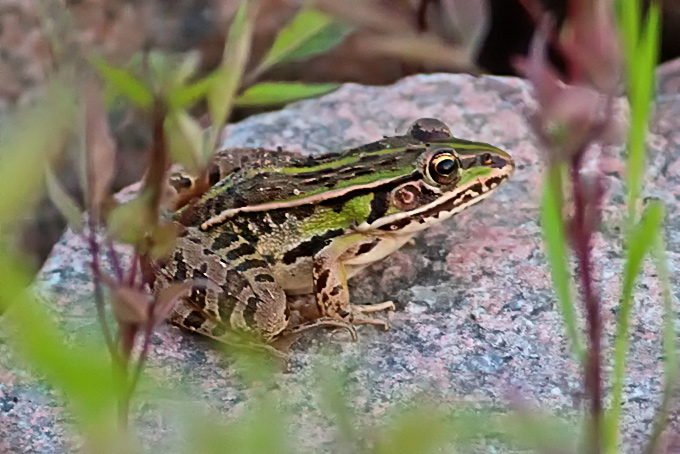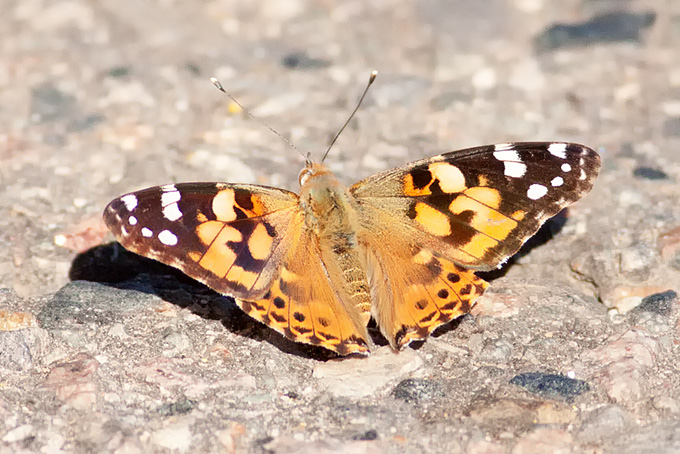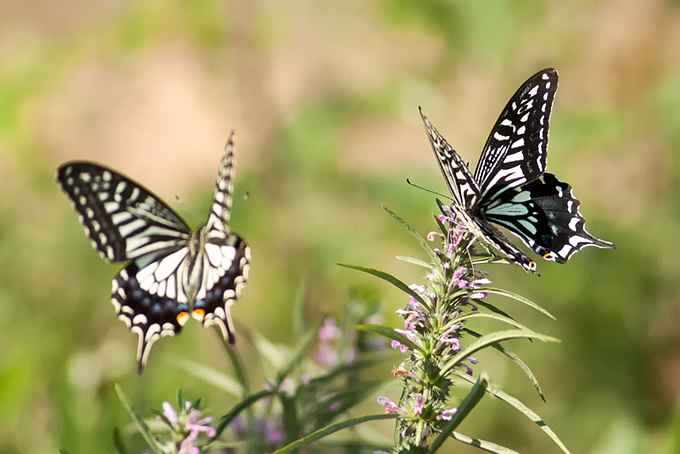 | E-mail to Birds Korea |
 | KWBS |
in the Region
 | The Oriental Bird Club |
 | BirdLife International (Asia) |
September
Temperatures begin to cool, especially towards the end of the month, with maxima often falling from 28°C to 20°C. Sunny, dry weather predominates, though often punctuated by occasional heavy rain and very strong winds associated with typhoons.
September sees migration pick up considerably. The first returning flocks of geese and Baikal Teal arrive mid-month, while seabirds still provide much interest too, with increasing numbers of jaegers and dark shearwaters possible. While a few shorebirds peak in number in August, most species are present in good numbers throughout September too, with occasionally large numbers of Red-necked Phalarope in the east and south, and small numbers of Nordmann’s Greenshank and Spoon-billed Sandpiper at prime sites, such as the Geum and Nakdong Estuaries. There can also be large numbers of Common Tern on the move (especially early in the month), while the scarcer Whiskered and White-winged Terns also become rather more widespread - with small flocks of the latter possible especially at Seosan and in Gunsan. Raptor migration picks up too, including by mid-month occasionally large concentrations of the declining Chinese Sparrowhawk making their way towards Japan (where over 50, 000 have been recorded in one day on an island in the Korean Straits only 50 km south of Busan!), with later in the month also an increasing number of Grey-faced Buzzard and Crested Honey Buzzard and very small numbers of Pied Harrier and Amur Falcon - especially through the northwest. Passerines also become rather more numerous and diverse too, with Thick-billed Warbler and Brown Shrike early in the month in the northwest, and good numbers of Eastern Yellow Wagtail, Pechora Pipit, and the three species of "grey-brown flycatchers" by mid-month (some Dark-sided and Brown still, with a peak in Grey-streaked). Towards the very end of September, Olive-backed Pipit migration also starts in earnest, and the first small flocks of buntings start to arrive, with most numerous being Chestnut and Black-faced.
National first records for the Republic of Korea in September in the past decade have included Steppe Grey Shrike in 2004, Eurasian Dotterel in 2005, Willow Warbler in 2006, Wood Warbler and Buff-breasted Sandpiper in 2007 and Booted Warbler in 2011.
Mokpo Namhang Urban Wetland, September 30
A morning visit to the site with very sunny weather conditions showed 3 Black-tailed Godwit, c. 40 Common Greenshank, 1 Grey Plover, 2 Terek Sandpiper, 10+ Common Sandpiper, 4 Long-billed Plover and as a rare visitor one Black-winged Stilt. Most Grey Heron, Great Egret and Little Egret roosted on boats or platforms, all in all about 30 in total. Black-tailed Gulls were not more than 20, the same number for the first Eurasian Teal at the site and also seen one Mallard in eclipse plumage. Also seen 2 Grey Wagtails, several White Wagtail flying, one Grey-headed Woodpecker, 2 Eastern Great Tit, only heard Brown-eared Bulbul and Eurasian Magpie. Everywhere plenty of dragonflies with some ending as food.
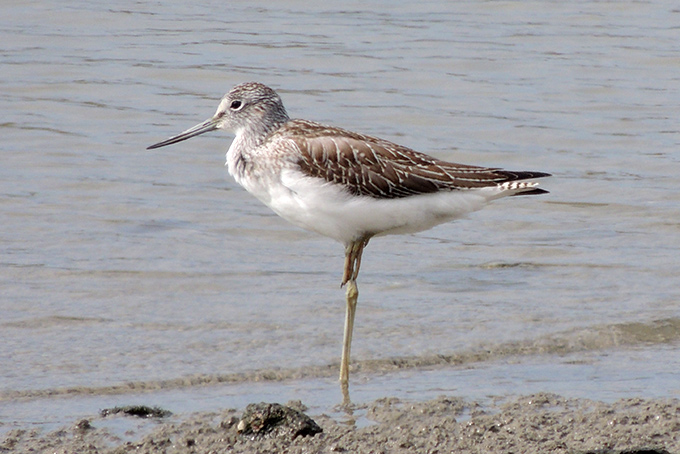
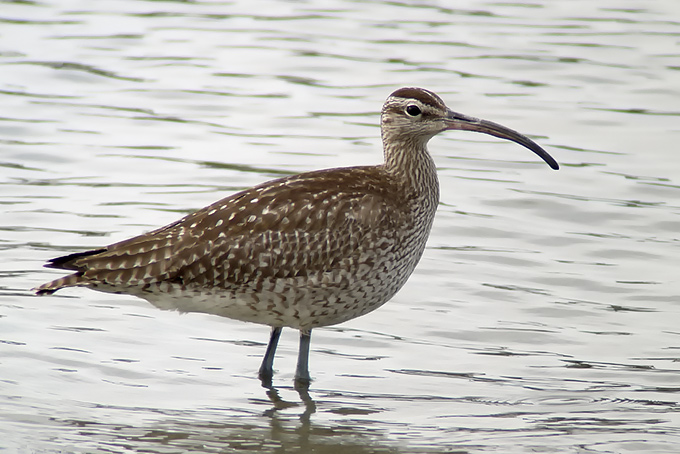
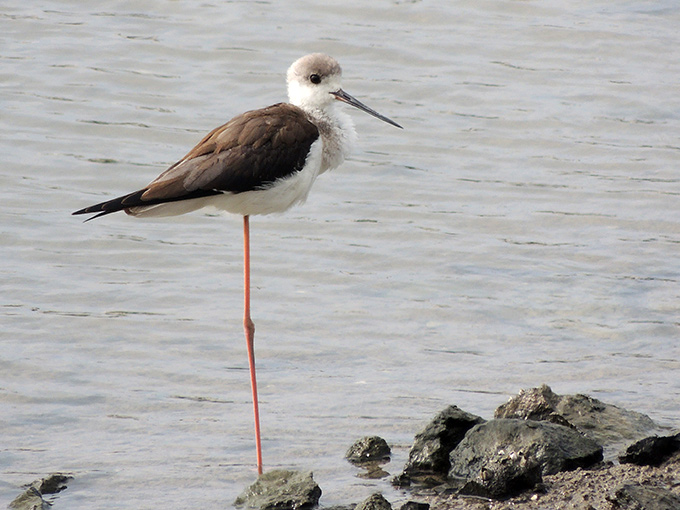
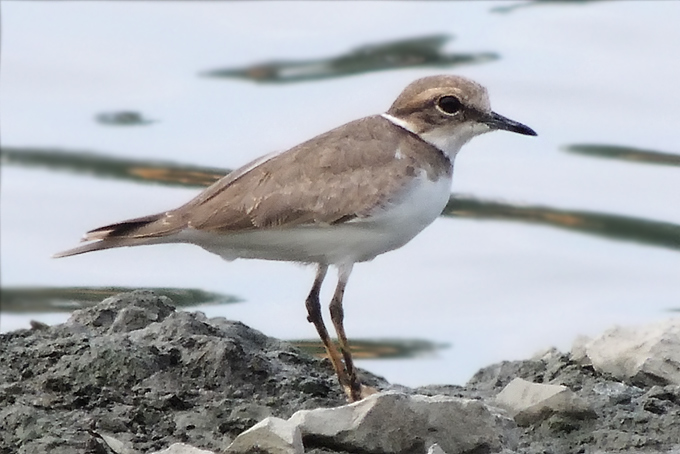
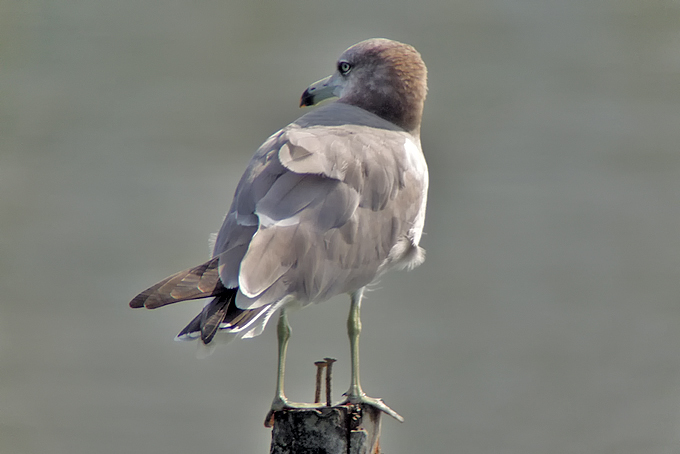
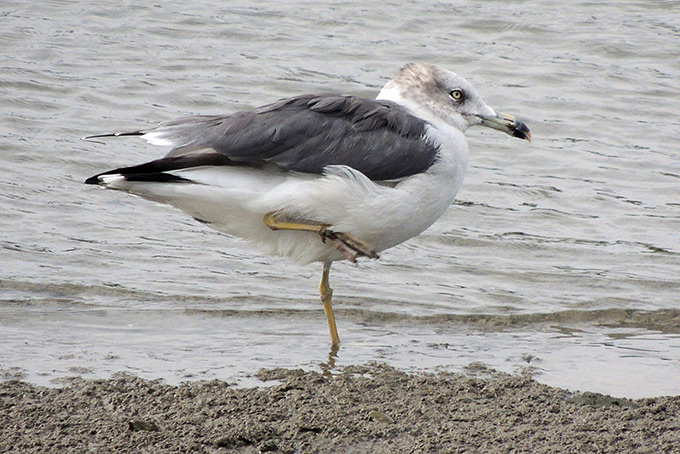
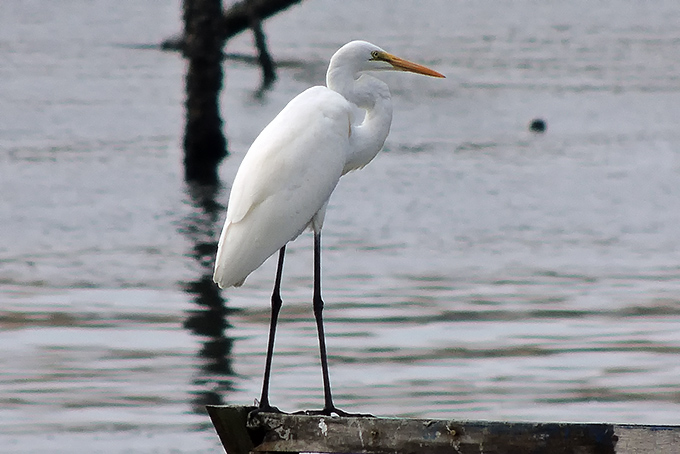
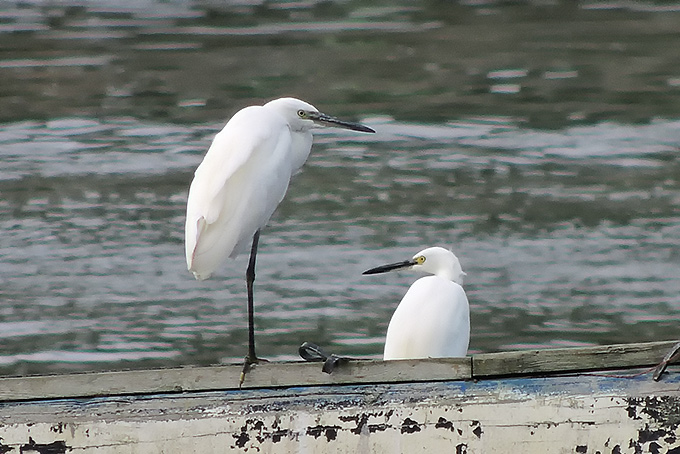
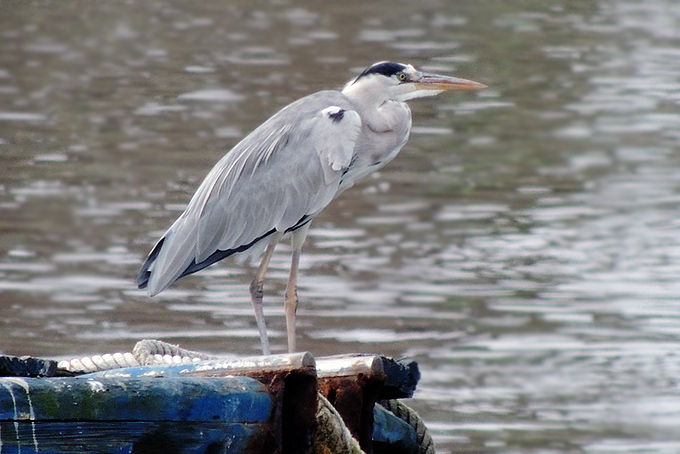
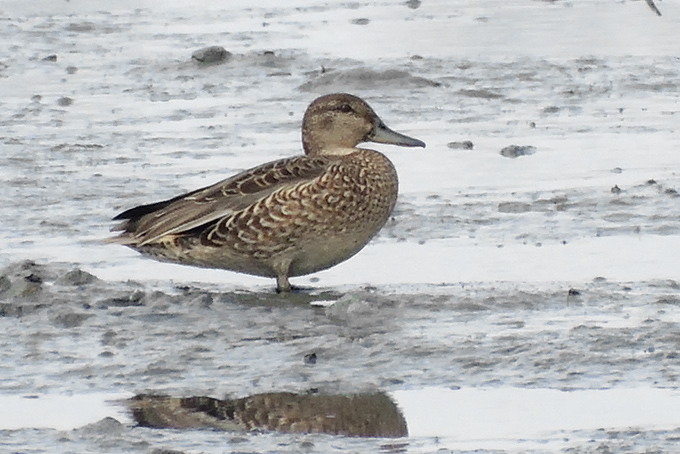
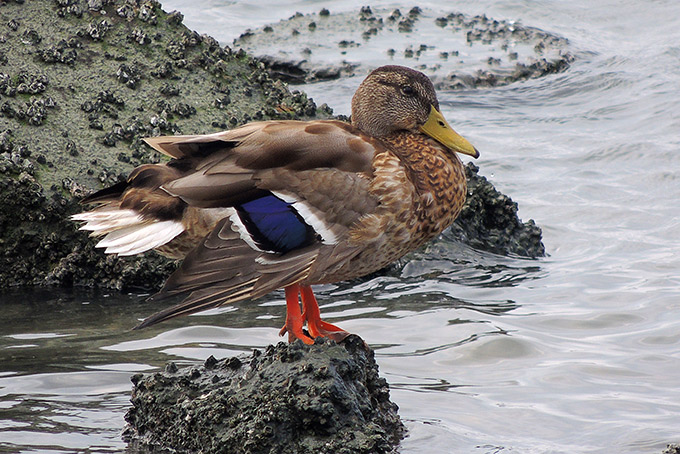
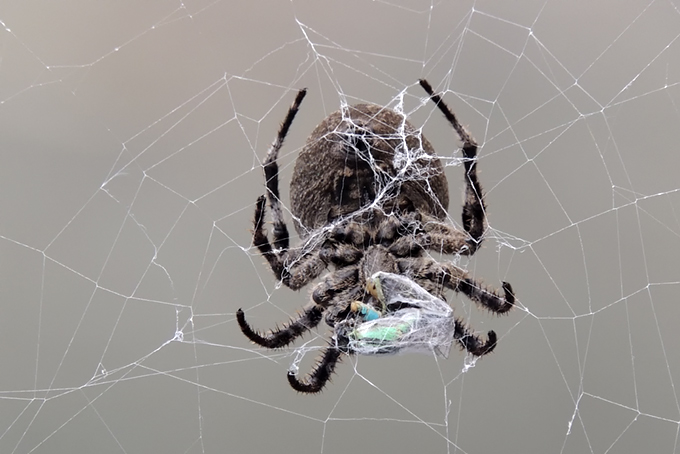
Ulju-Gun, September 29
Despite the rain, stiff breeze and dark clouds, a pelagic, venturing some 20km off the coast of Gyeongsangnam Province was enjoyable for the sight of Streaked Shearwaters effortlessly lancing past the boat, with 400 or so over a three-hour period. One of them, (presumably in moult?) - showed an unusual upperwing pattern - photographed below. Also present a handful of Black-headed Gull, three Mongolian Gull and one Saunders's Gull. Bizarrely, far offshore, an inexperienced juvenile Eurasian Hobby struggled through the inclement weather.
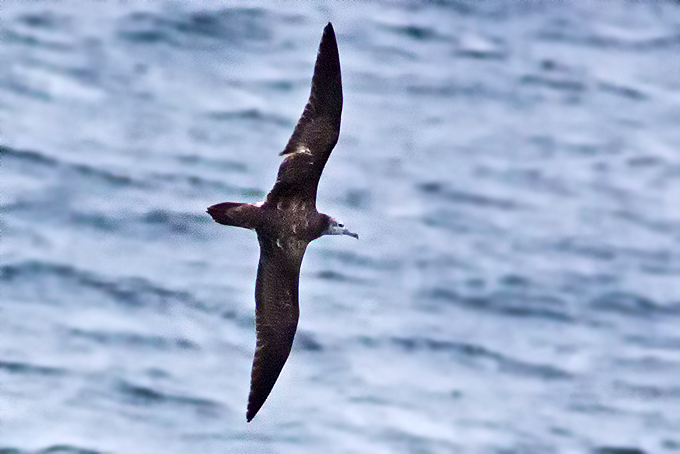
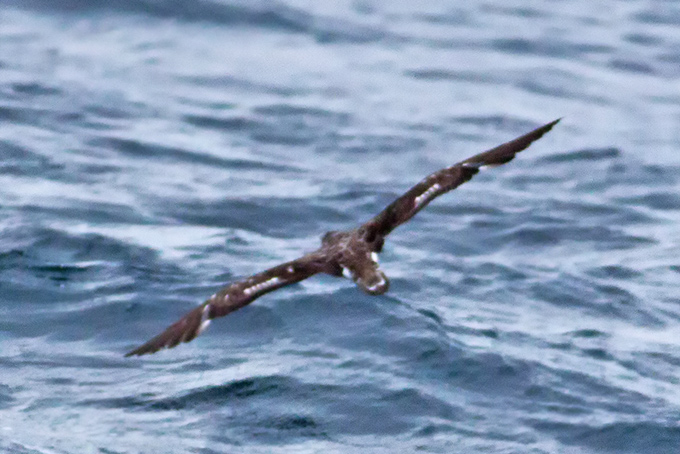
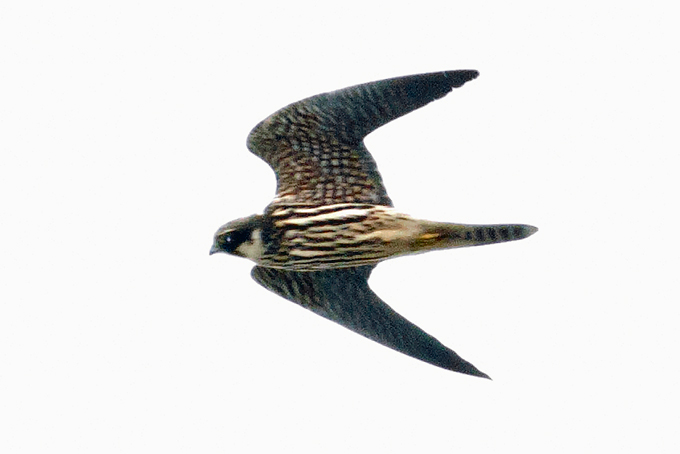
Jeju Island, September 28
I rode out to Jeju’s northwest coast early on Saturday morning in search of a reported Buff-breasted Sandpiper. I arrived at a field just in from the coast that featured a great mix of wet and dry habitats, and waited for the bird to show itself. After almost an hour, a small shorebird flew from the dry scrubby area to the small wetland next to the road – it was the Buff-breasted Sandpiper! I hunkered down low and got some spectacular long and close looks as it paced lazily through the mud at the edge of the water. Such a sleek and regal bird, it was a real pleasure to watch. Also spotted in this small but productive patch of wetland were low single-digit numbers of Common Snipe, Long-toed Stint, (amorous) Green Sandpiper, Common Greenshank, Common Redshank, Wood Sandpiper, Little Ringed Plover, Pacific Golden Plover, and Dunlin. The Buff-breasted Sandpiper seemed to be most closely associating with two Pacific Golden Plovers. Outlandish theory time – perhaps it fell in with these birds in their overlapping summer ranges in eastern Siberia and got mixed up and followed them to the ROK instead of its normal South American wintering grounds?
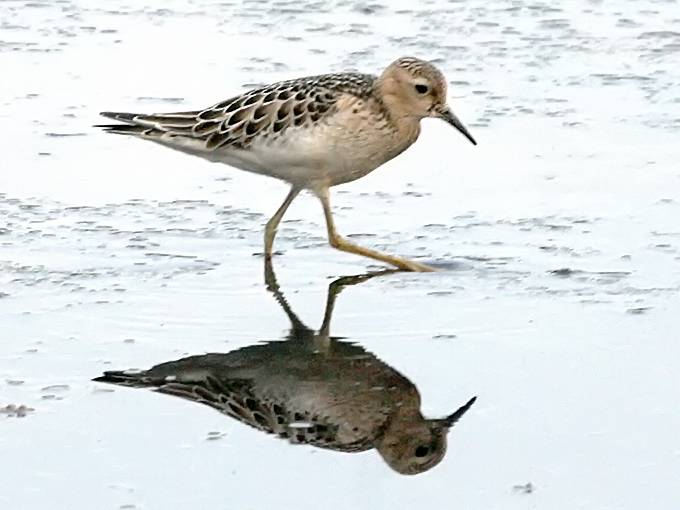
Nakdong Estuary, September 27
A check of part of the Nakdong Estuary ahead of next week’s visit by a team from Cornell’s lab of ornithology found surprisingly good numbers of shorebirds, the vast majority of which were in juvenile plumage – with neat plumage fringes illuminated beautifully in excellent autumnal light. Although much disturbance was caused from time to time by raptors (most especially two Peregrine Falcon and two or more Common Kestrel), most of the birds were very well-settled most of the time. The highlight was two juvenile Spoon-billed Sandpiper in one scan among 1500+ Red-necked Stint (almost all of which were also juveniles, showing a tremendous range in plumage from dull to super-bright and Little Stint-like, with a few also sporting strikingly long bills), along with c. 220 Sanderling, 70 Dunlin, 10+ Broad-billed Sandpiper and 10+ Mongolian Plover. Two Far Eastern Curlew, single Great Knot, Sharp-tailed Sandpiper and Curlew Sandpiper (latter also in juvenile plumage) were further species of note.
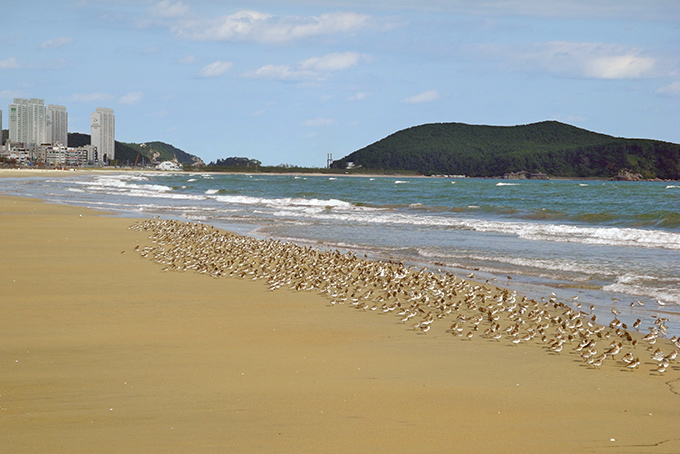
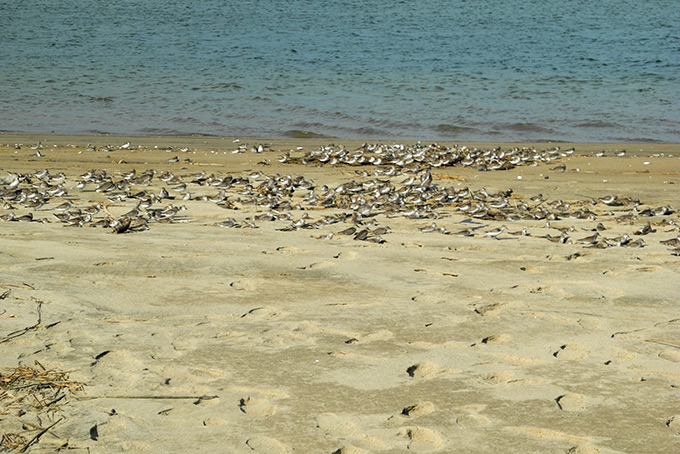
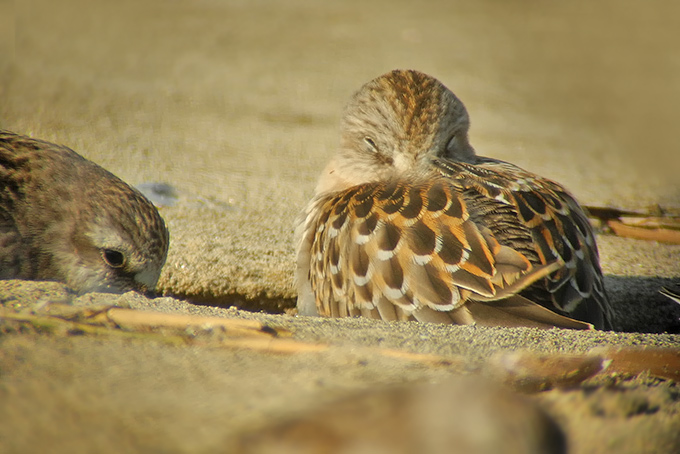
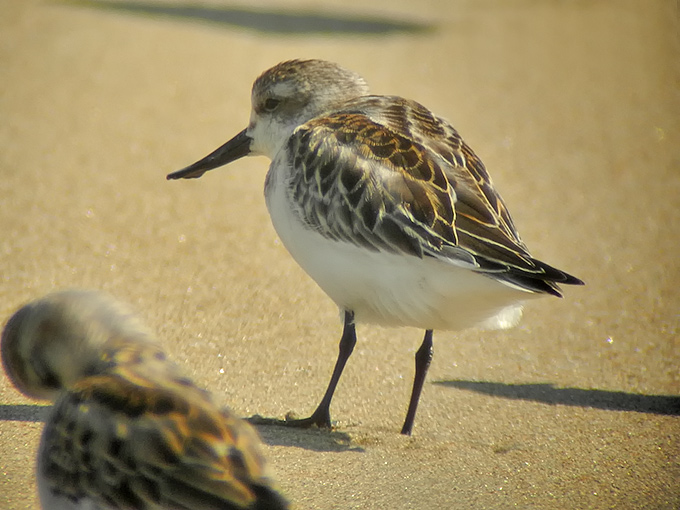
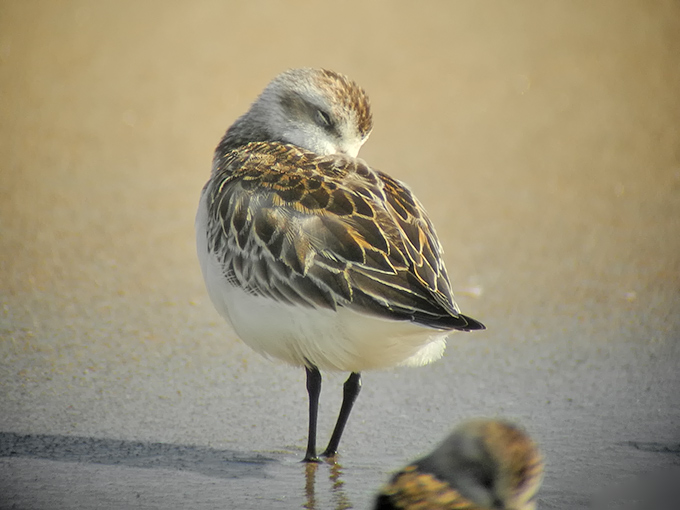
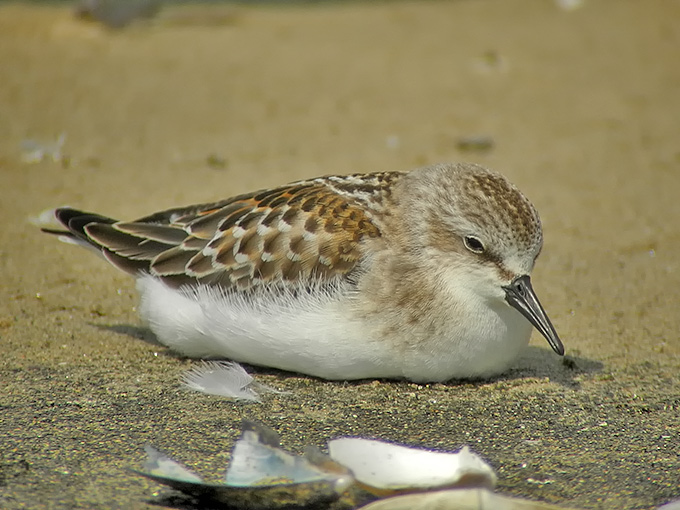
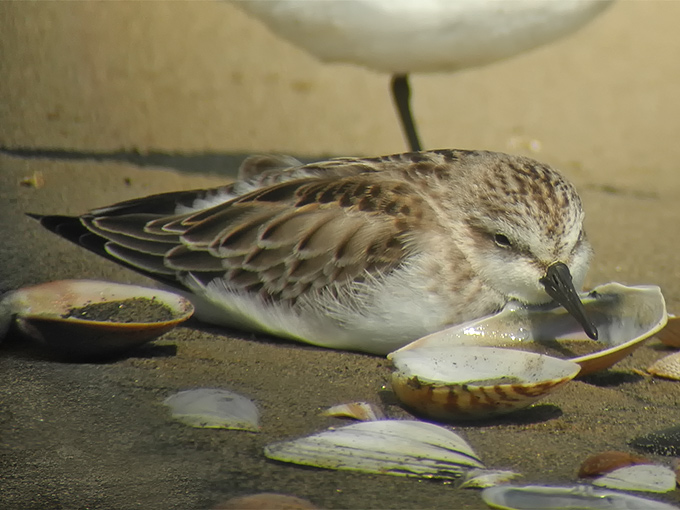



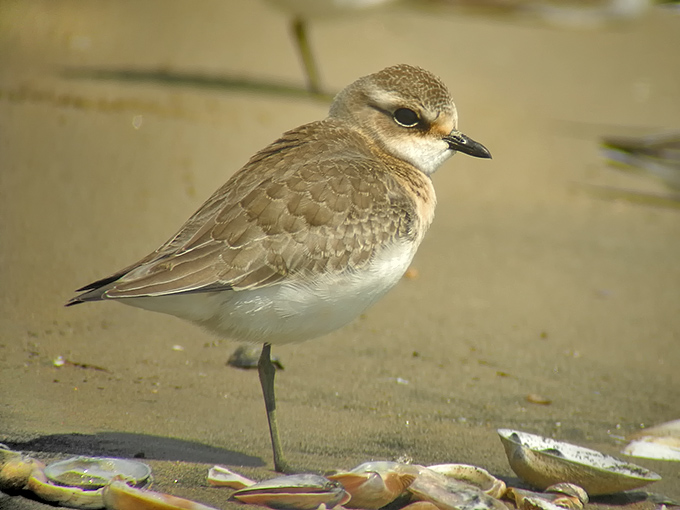
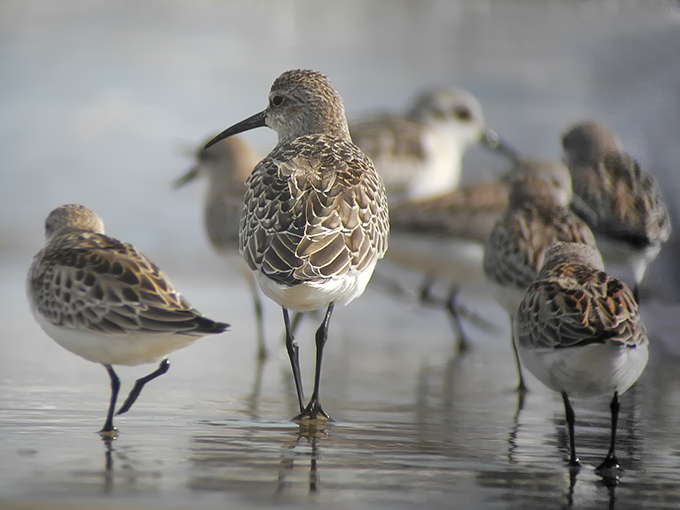
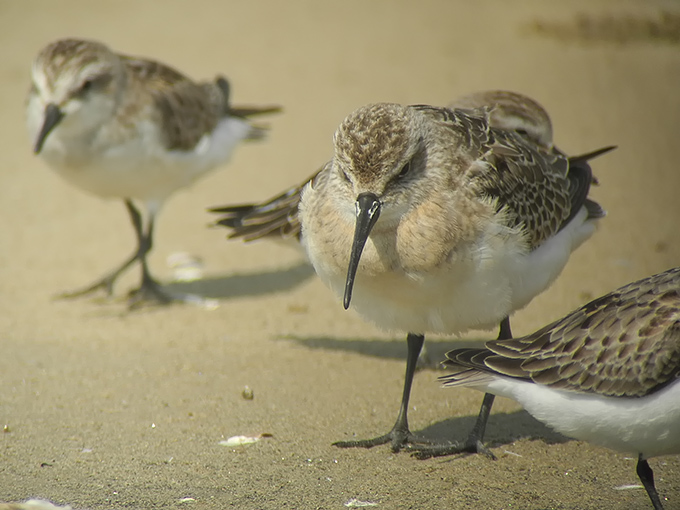
Upo Wetland, September 25
On arriving at the main car park, I asked about the Pheasant-tailed Jacanas, and was told that there are a minimum of 9 young this year at the wetlands, more than double the number of last year. I searched in vain for adults, but when I found two juveniles feeding below the Daedae bank of the wetland not far from the path I was quite happy to observe them. They spent a few hours eating small creatures found among the rich vegetation covering most of the water surface, occasionally showing their beautiful white wings as they restored balance, or moved to another spot nearby. I also saw some 20 Taiga Bean Geese and a Peregrine Falcon patrolling overhead, as well as the common ducks. Returning to the car park I also had good views of an uncommon Freyer’s Purple Emperor butterfly perched in a tree beside the path.
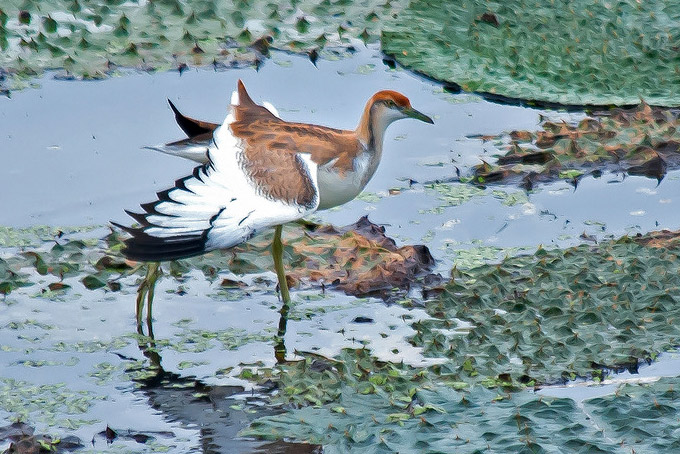
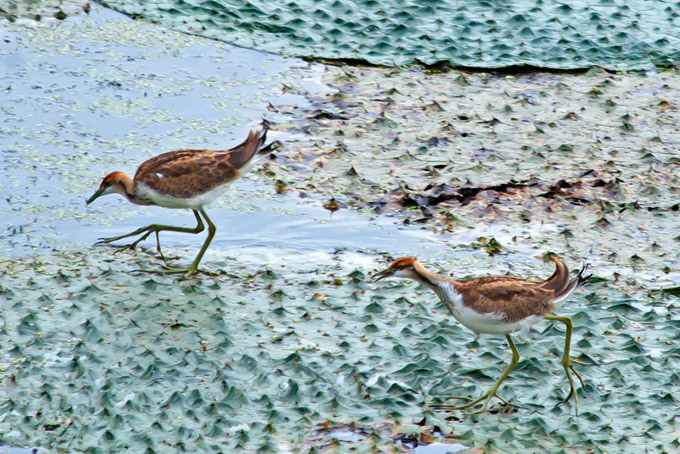
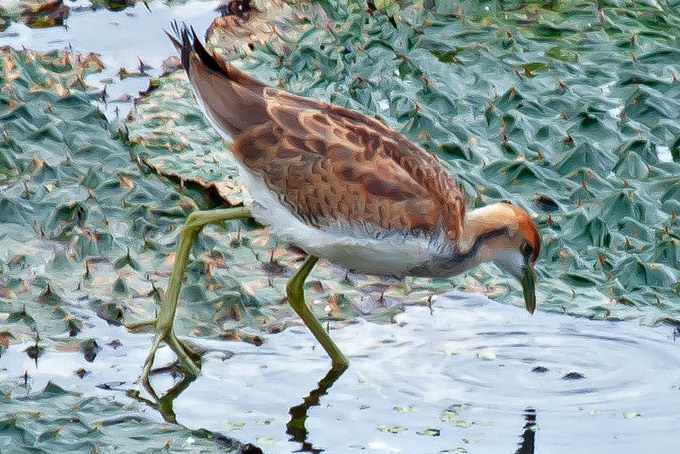
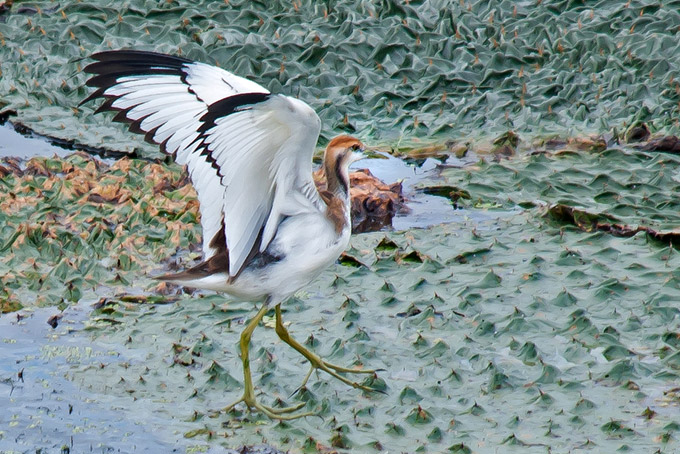
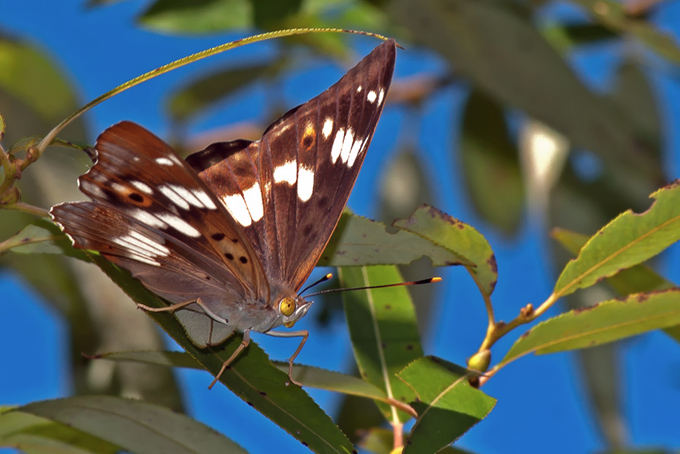
Uiwang, September 19
As a multi-billion won "bird centre" is built at one end of the lake, the other end has become a construction site for a rail cart track, erasing the former reedbed in the process. Huddled in the corner furthest from the disturbance, some of the usual birds could still be found:
- Mallard Anas platyrhynchos. Four.
- Eastern Spot-billed Duck Anas zonorhyncha.
- Eurasian Teal Anas crecca. Six, in eclipse.
- Great Crested Grebe Podiceps cristatus. Sixteen, including eight locally-raised juveniles.
- Black-crowned Night Heron Nycticorax nycticorax.
- Eastern Cattle Egret Bubulcus coromandus.
- Grey Heron Ardea cinerea.
- Great Egret Ardea alba.
- Intermediate Egret Egretta intermedia.
- Little Egret Egretta garzetta.
- Great Cormorant Phalacrocorax carbo.
- Common Moorhen Gallinula chloropus. Six, including two juveniles.
- Eurasian Coot Fulica atra. Eleven included at least one juvenile.
- Common Snipe Gallinago gallinago. Six. Almost always call when taking flight.
- Wood Sandpiper Tringa glareola.
- Common Sandpiper Actitis hypoleucos.
- Temminck's Stint Calidris temminckii. Three feeding together. Very inconspicuous and unobtrusive. This species is probably much overlooked due to the fact they are so well camoflaged against mud and move so slowly.
- Black-tailed Gull Larus crassirostris.
- Oriental Turtle Dove Streptopelia orientalis. 100+ in the ricefields.
- Great Spotted Woodpecker Dendrocopos major.
- Azure-winged Magpie Cyanopica cyanus. One seen and another calling from the bushes with its typical "clockwork toy" sound. Probably a first for this site.
- Eurasian Magpie Pica sericea.
- Large-billed Crow Corvus macrorhynchos.
- Eastern Great Tit Parus minor.
- Brown-eared Bulbul Hypsipetes amaurotis.
- Yellow-browed Warbler Phylloscopus inornatus. Two heard.
- Oriental Reed Warbler Acrocephalus orientalis. One seen clumsily crashing through the stems with its "ting" call, presumably trying to draw attention away from its fledglings.
- Vinous-throated Parrotbill Sinosuthera webbiana.
- Eurasian Tree Sparrow Passer montanus.
- Grey Wagtail Motacilla cinerea. Two adults and a juvenile.
- White Wagtail Motacilla alba. One leucopsis.
Plentiful butterflies included the Large Copper Lycaena dispar, Short-tailed Blue Everes argiades and Argus Lycaeides argyrognomon.
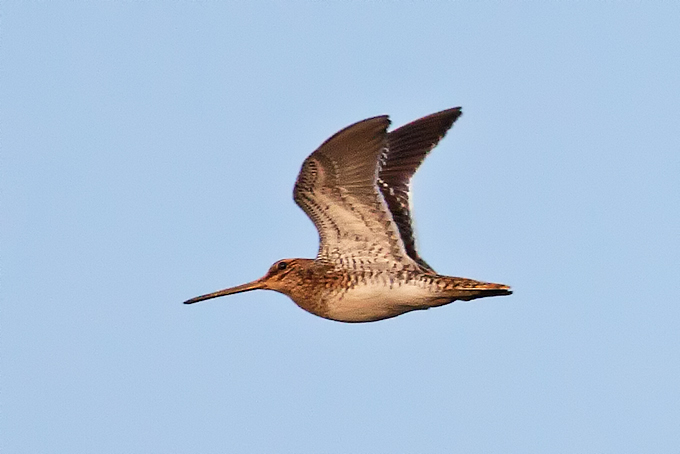
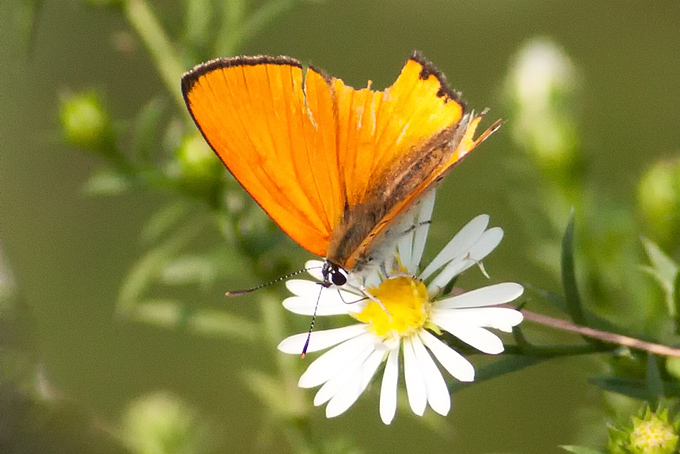
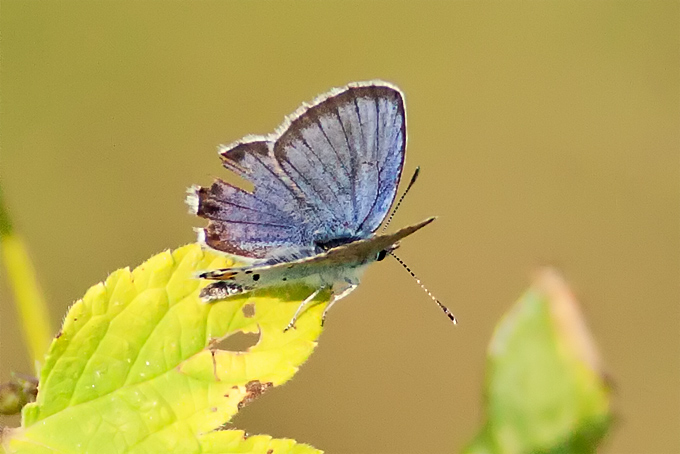
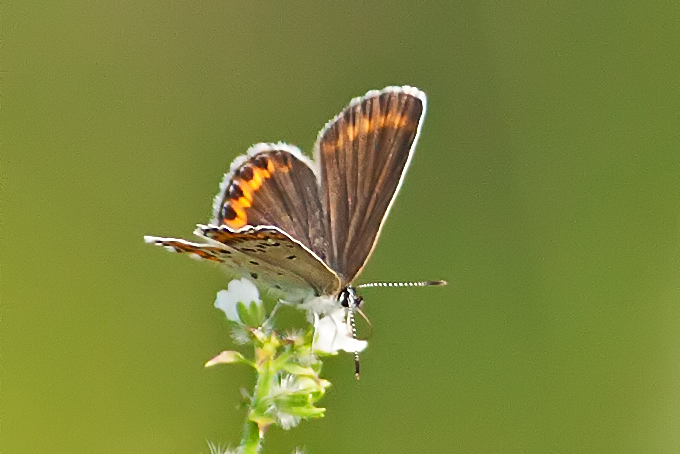
Dobongsan (North Seoul), September 18
A brief morning visit to Dobongsan’s lower reaches. Weather hot and still. Outside Hwarangdae Subway Station, a Yellow-browed Warbler calling. At Dobongsan, only residents evident: a family of 5 Great Spotted Woodpeckers, 1 Japanese Pygmy Woodpecker, 2 Oriental Turtle Doves, Brown-eared Bulbuls (heard), 3 Eurasian Magpies, 1 Eurasian Nuthatch, 3 Eastern Great Tits, a small flock of Vinous-throated Parrotbills, a smaller flock of Eurasian Tree Sparrows, 2 young Daurian Redstarts, a Little Egret and a Striated Heron. Overhead, a single Grey Heron, a Eurasian Hobby and 3 Eastern Spot-billed Ducks. Representing the mammals, a Chipmunk and a Red Squirrel.
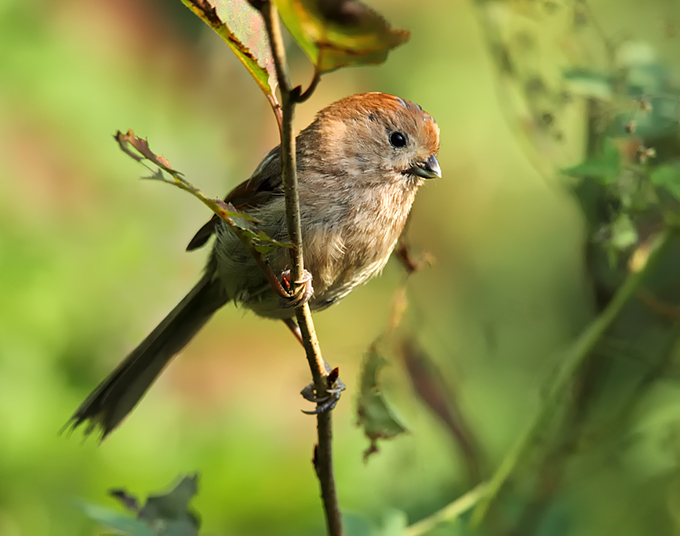

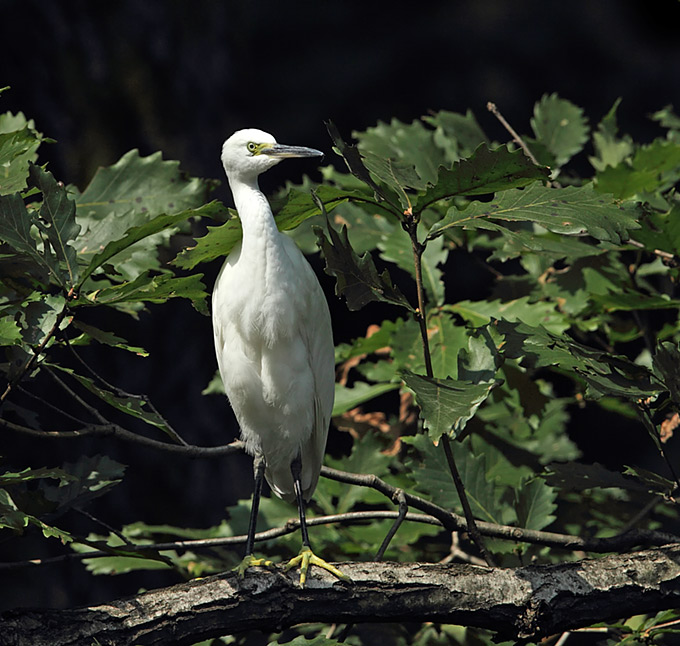
Busan, September 14 & 15
I visited Busan to attend a lecture by Dr. Nial Moores on the Saturday. Even though there were not many participants, it was a priceless time to here the conservation stories from Dr. Moores. The lecture was originally scheduled to end at 3 pm but we finished earlier and looked over the Dadaepo area. After that I could do some birding with Mr. Jason Loghry at the Yeom-Mak wetland nearby the Nakdong river on the way to Gimhae. It was late at dusk and we couldn't look closely with enough time, but still we saw lots of bird species on that tiny wetland and were reminded how important these area is.
Species List:
- Eastern Spot-billed Duck Anas zonorhyncha.
- Japanese Night Heron Gorsachius goisagi.
- Grey Heron Ardea cinerea.
- Great Egret Ardea alba modesta.
- Intermediate Egret Egretta intermedia.
- Little Egret Egretta garzetta.
- Black Kite Milvus migrans.
- Common Kestrel Falco tinnunculus.
- Peregrine Falcon Falco peregrinus.
- Common Moorhen Gallinula chloropus.
- Eurasian Coot Fulica atra.
- Black-winged Stilt Himantopus himantopus. Just one individual at Yeom-Mak wetland, 14-15.
- Little-ringed Plover Charadrius dubius.
- Common Snipe Gallinago gallinago gallinago.
- Spotted Redshank Tringa erythropus. Two individuals were taking a rest at Yeom-Mak wetland, 14. It was so grad to see these steep-decreasing species in a long time from my last sightings.
- Common Greenshank Tringa nebularia. Three individuals was sighted at 15, same spot where the Spotted Redshanks were.
- Green Sandpiper Tringa ochropus.
- Wood Sandpiper Tringa glareola.
- Common Sandpiper Actitis hypoleucos.
- Great Knot Calidris tenuirostris. Two juveniles observed in a small flock of Red-necked stints at Dadaepo harbor, 14.
- Red-necked Stint Calidris ruficollis. A flock of 27 individuals was roosting at Dadaepo harbor with two Great Knot. Most of them were juveniles and one Little Stint suspected individual was found after reviewing, we visited that area again with Dr. Moores in the afternoon but couldn¡¯t find it. Its bill was evidently longer and slender with relatively dominent supercilium and strong contrast on its crown.
- Black-headed Gull Chroicocephalus ridibundus.
- Black-tailed Gull Larus crassirostris.
- Vega Gull Larus vegae. One in moulting was observed at Dadaepo harbor, 14. This is presumed the first Vega Gull record on the second half of this year.
- Common Kingfisher Alcedo atthis.
- Grey-headed Woodpecker Picus canus. Sounds Only.
- Bull-headed Shrike Lanius bucephalus.
- Eurasian Magpie Pica pica.
- Large-billed Crow Corvus macrorhynchos.
- Eastern Great Tit Parus minor.
- Barn Swallow Hirundo rustica.
- Oriental Reed Warbler Acrocephalus orientalis. Sounds only.
- Far-eastern Cisticola Cisticola juncidis.
- Vinous-throated Parrotbill Sinosuthera webbiana.
- Blue Rock Thrush Monticola solitarius philippensis.
- Eastern Yellow Wagtail Motacilla tschutschensis. Sounds only.
- White Wagtail Motacilla alba. Sounds only.
A total of 37 species.

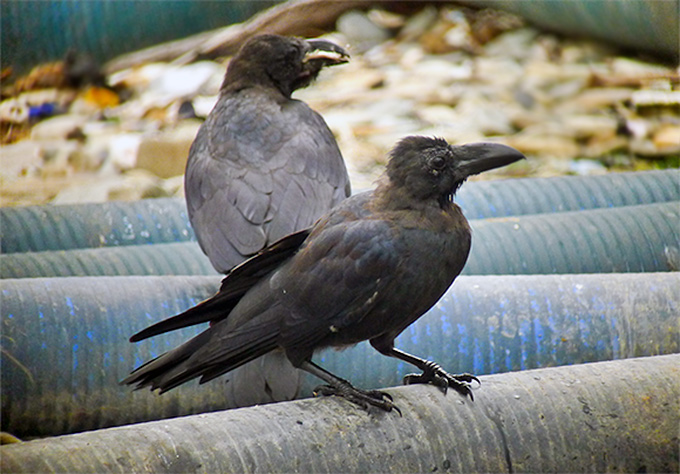
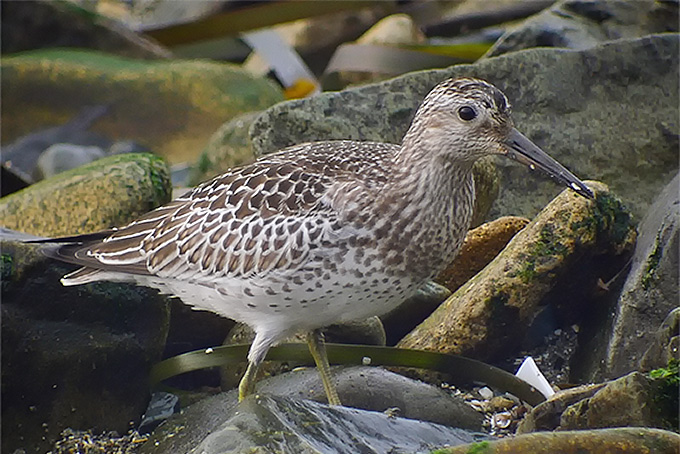
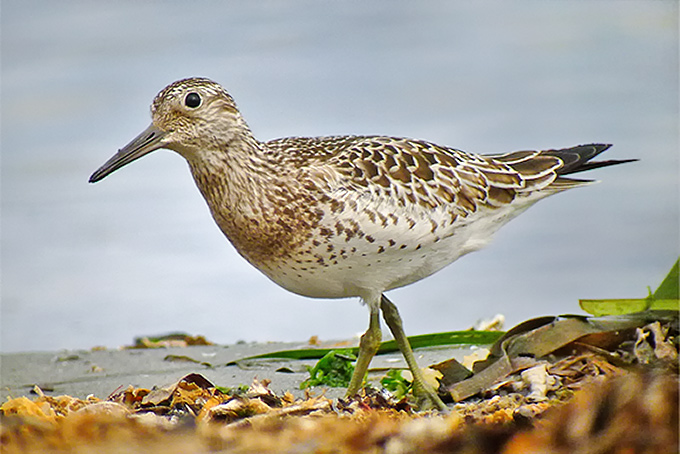
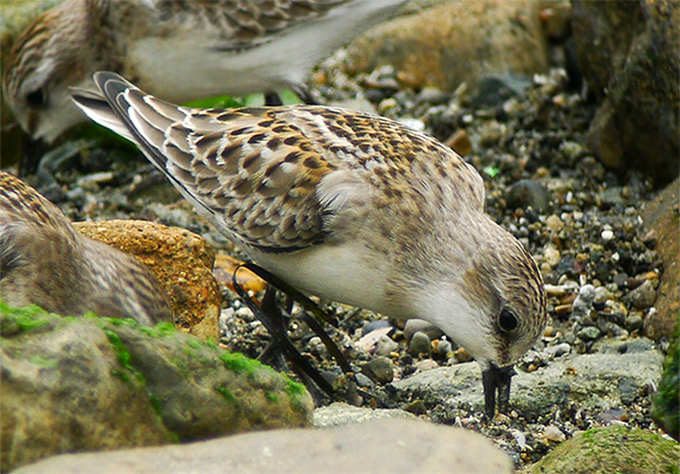
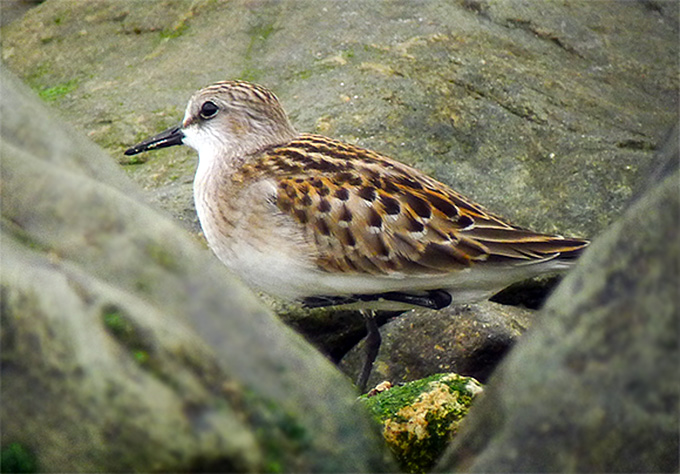
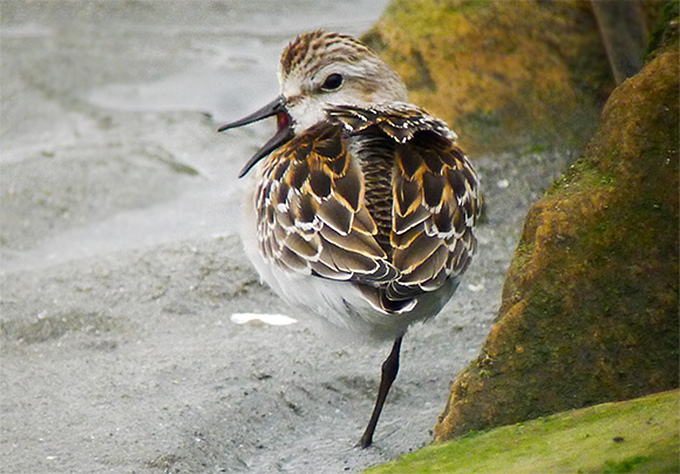
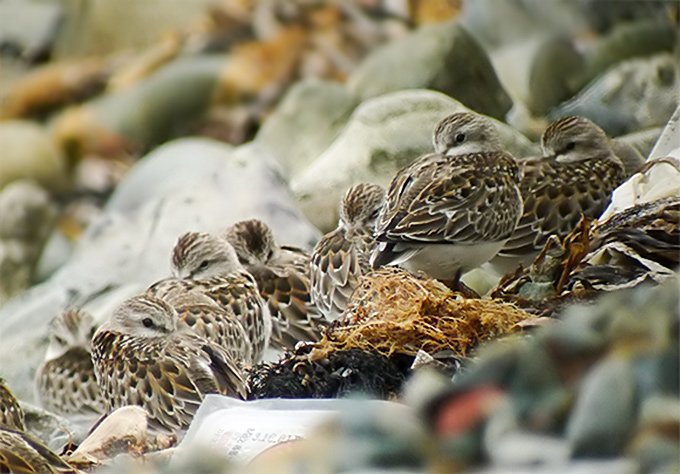
Heuksan Island, September 8
Having slept very little the previous day, it was a real struggle trying to wake up before sunrise in order to search for locustellas (yes, the search still continues and so does the disappointment!). Walking to the wetland area north of the harbor, the first bird of note was a Pintail Snipe (in the mist nets). Thanks to a researcher from the Migratory Birds Center, I was able accompany the gentleman as he went about inspecting the mist nets and collecting the birds for ringing. It was a real treat to be able to observe the ‘pins’ on the tail of the bird! On a nearby beach, a Black-winged Stilt and about 3 dozen Sanderlings were seen. In a plantation behind the wetlands, a cuckoo was observed. It had an elongated shape, rather dark upper parts and relatively thick barring. Being silent for the entire duration of the observation made it almost impossible for it to be IDied definitively. Expert comments based on the photos below are welcome. Back at the main village, many juvenile Light-vented Bulbuls were seen. A flock of 7 Chestnut-cheeked Starling and 2 Daurian Starlings wrapped up our stay on the island.
On the return ferry, some gentle persuasion provided us a chance to observe from the deck (under supervision of course … felt like a school kid!) but it was totally worth it. At least 8 Red-necked Phalaropes and an impressive concentration of Streaked Shearwaters in 2 big flocks. Conservative estimate would put the total size of the combined flock to at least 400 birds. Even though we had to get in after about 10mins, perseverance paid off when JL found a (rather distant) Skua with mostly dark plumage and lighter patches on the primaries.
In all a fairly productive trip to a rather touristy island with a total of 55 species observed on or around the island.
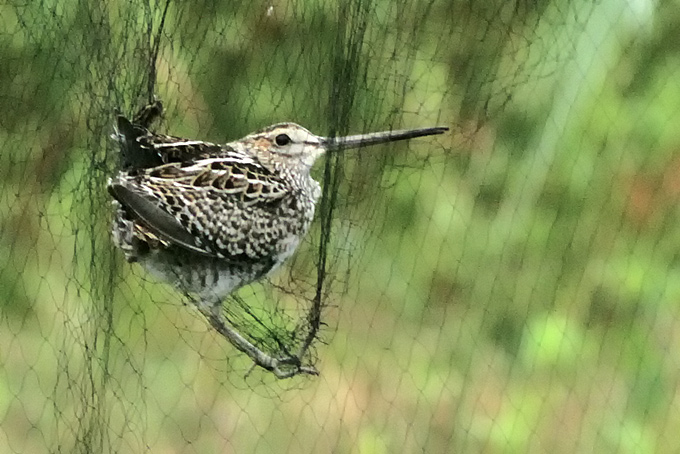
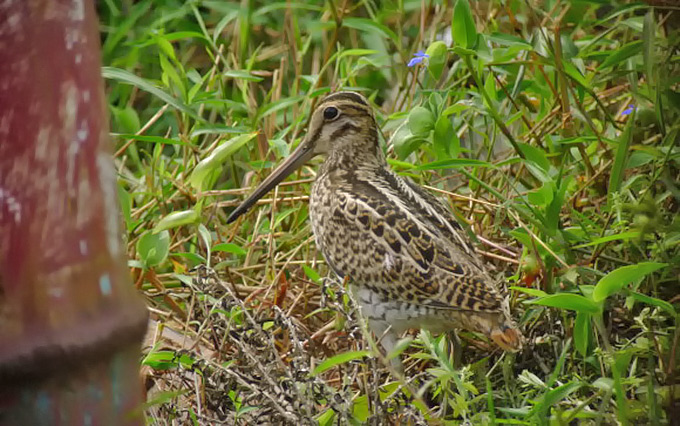
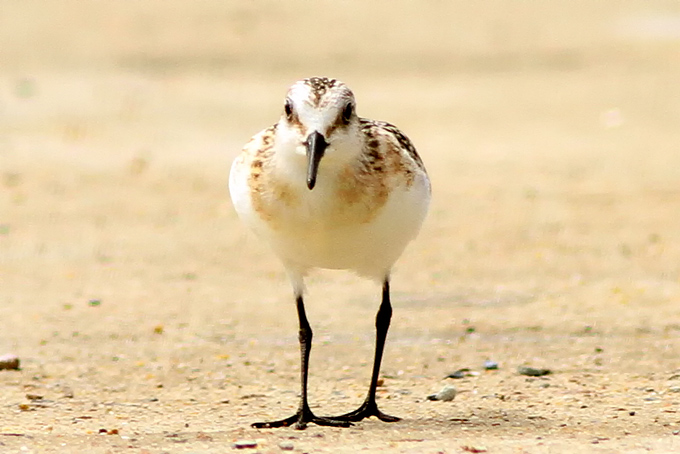
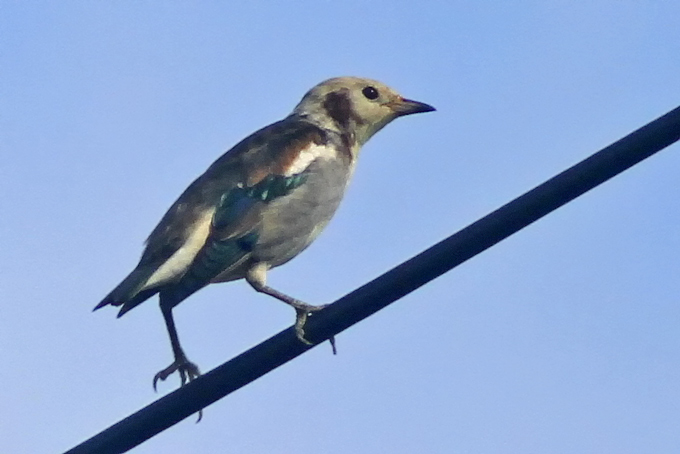
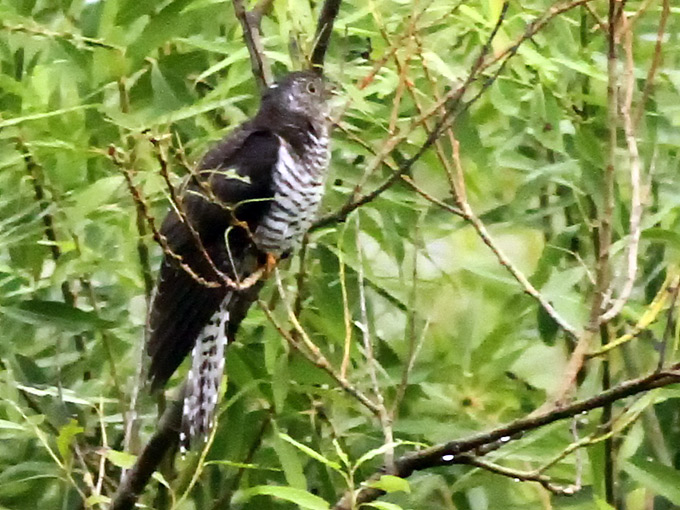
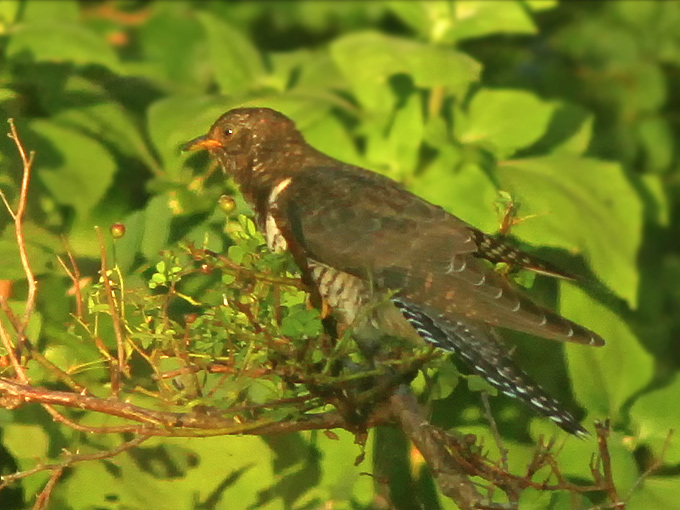
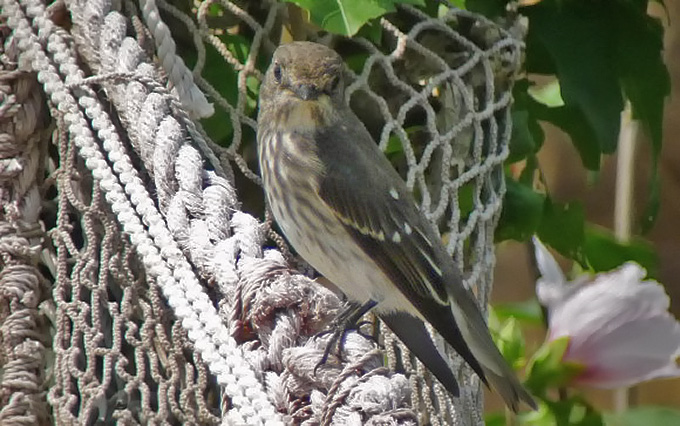
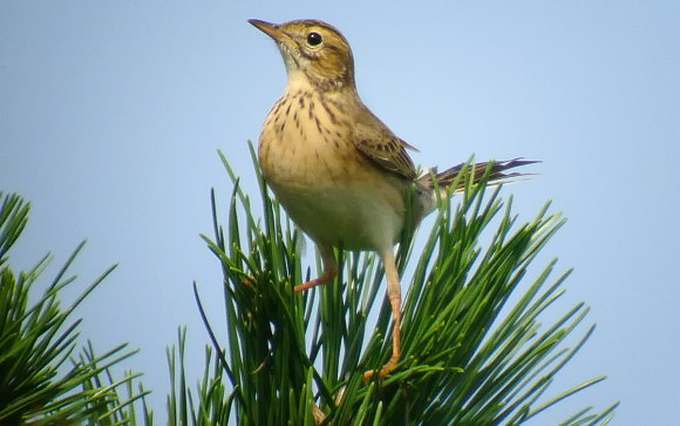
Heuksan Island, September 7
Starting early from Mokpo harbor, we encountered few sea-birds enroute. Most notable were about Common Terns (~10), Streaked Shearwater (4) and Red-necked Phalarope (4). Once on the island, we found Japanese White-eyes is almost every tree and bush. There were a few Barn Swallows in the air along with a split second view of what appeared to be a Sand Martin. Quite a few wagtails were observed in the main village near the harbor – Eastern Yellow Wagtail, White Wagtail, Grey Wagtail and a single Forest Wagtail. After having distant looks at a couple of Common Kestrels, we suddenly came across a harrier with what appeared to be a bat in its talons. It had a white rump, whitish nape (it was bleeding from the back of its head) and I managed to quickly snap a photo before it disappeared behind the trees. It appeared after while and soared for some time over the harbor. The features seemed to indicate a juvenile Pied Harrier. Expert comments on ID would be greatly appreciated. Walking towards the northern side of the harbor, we found 2 Sanderlings and were able to observe them from close quarters. There were plenty of Pale Thrushes (many of them juvenile) and some of them had bands on their feet. At a reservoir in the village north of the harbor, a Striated Heron was seen along with a Peregrine couple in the air. A Long-toed Stint was observed under excellent light conditions which yielded some nice photos. At this point while looking at a pair of snipes (probably Common Snipes), we came across a very interesting flycatcher. It had a rather heavy bill, a very prominent eye-ring with no pale lores. Overall greyish in color with rusty tones on the wing – it seemed to be a familiar species showing unfamiliar characteristics. We were left scratching our heads (and snapping a few photos for ID). Expert comments on whether its a Asian Brown or Dark-sided Flycatcher is welcome. Towards dusk, notable species were a Daurian Starling, Black-naped Oriole, Arctic Warbler, Eastern-crowned Warbler (JL only) and an apparent juvenile Little Cuckoo.
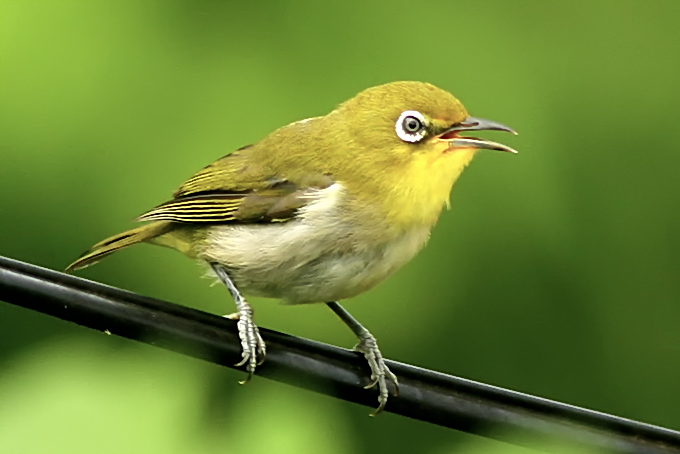
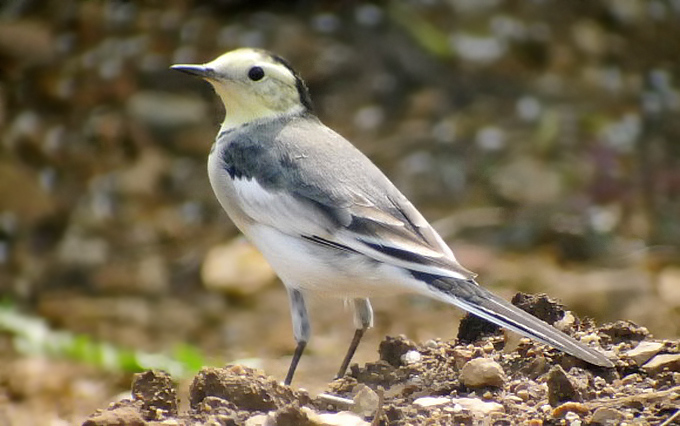
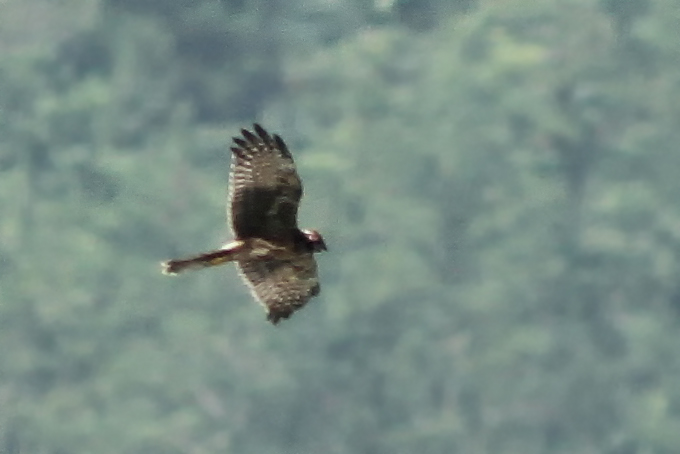
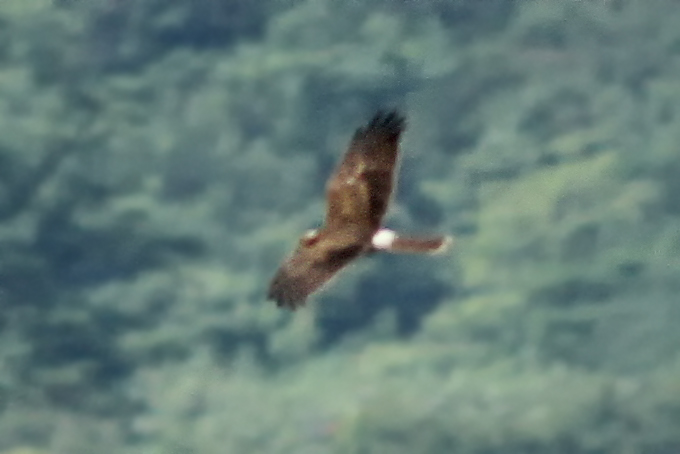
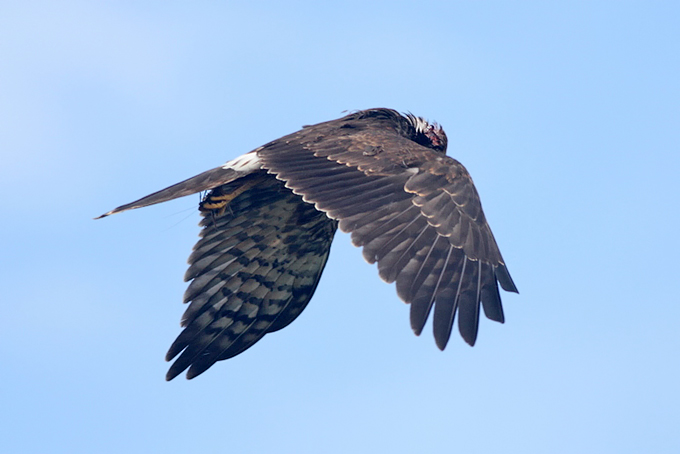
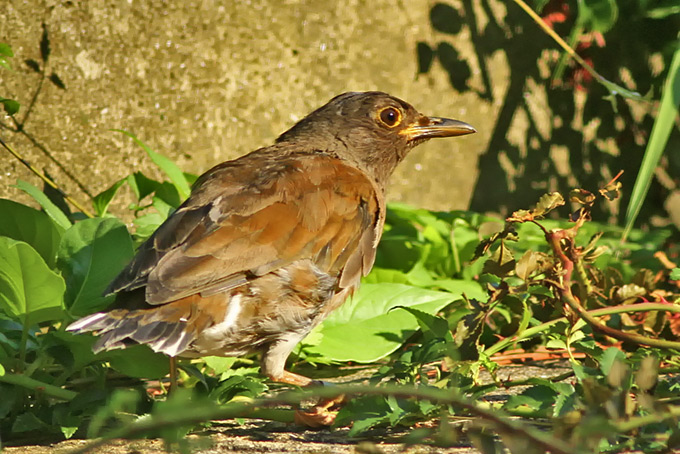
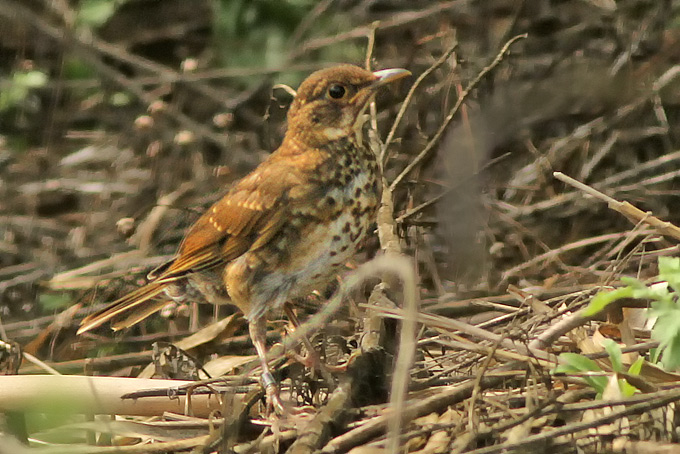
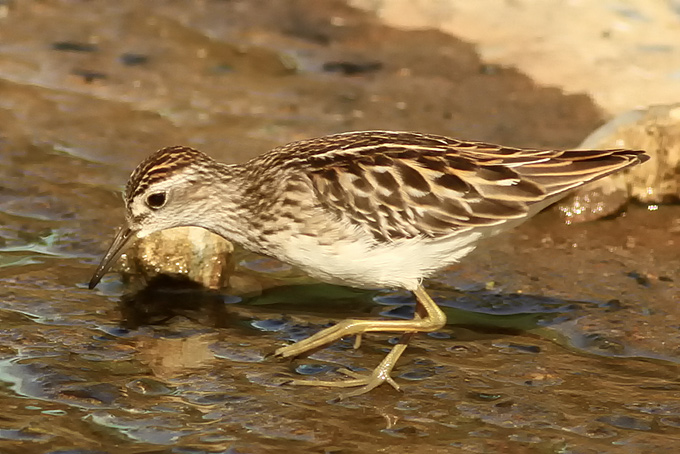
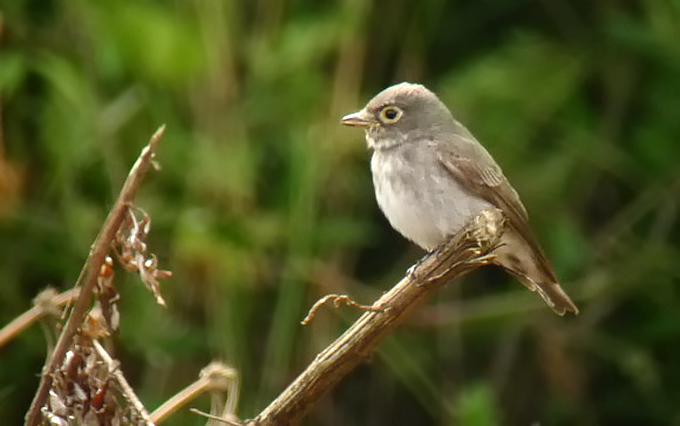

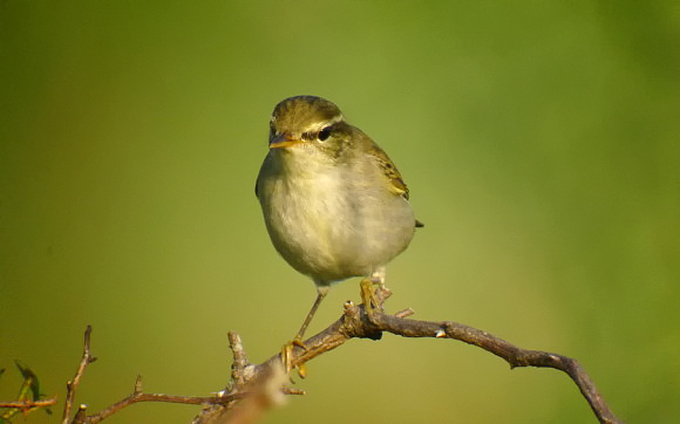

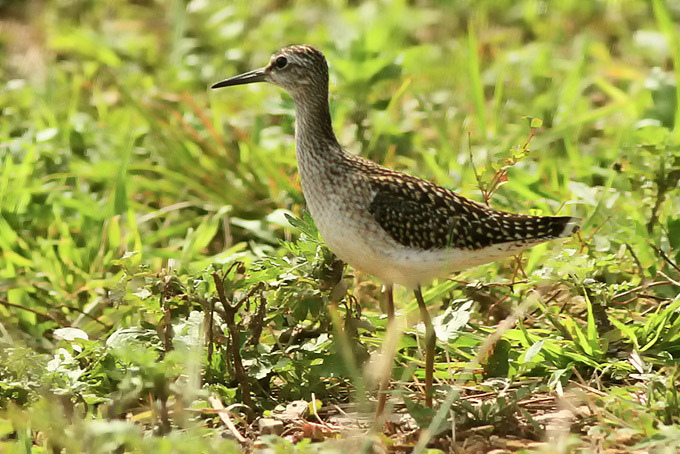
Jeju Island, early August to early September
July and August were notable for their record-breaking lack of precipitation on Jeju. Water levels were dangerously low at reservoirs across the island, and local farmers suffered enormously. Birdwise, this period saw young birds fledging at a variety of sites. Ring-necked Pheasants seemed to grow from pint-sized to full-grown in a spectacularly short time frame. Other Jeju summer breeders observed fledging during late summer include Tree Sparrow, Great Tit (many appearing washed-out with a dingy yellowish tint), Yellow-rumped Flycatcher, Brown-eared Bulbul (which look prehistoric when getting their adult feathers in) Japanese Bush Warbler, and Black Paradise Flycatcher at several sites that still remain undisturbed for now. Unfortunately, the voracious pace of commercial land development on Jeju has increased alarmingly over the past few years – it cannot possibly continue like this unchecked. Several key birding sites have been disturbed or destroyed in recent years due to ‘development’.
I have enjoyed watching Barn Swallows cavort within arm’s reach outside my windows all summer, as well as at numerous sites around Jeju. In early August I spotted two Black Wood Pigeons clacking noisily through a nice bit of coastal mixed forest on the south coast, just across from an islet where they breed. Several confiding White-backed Woopeckers (the official bird of Jeju) also favor this area. Vocal flocks of Japanese White-eye can be found at a wide range of wooded spots, and often mix in with Great and Long-tailed Tits, as well as Japanese Bush Warblers and Eastern Crowned Warblers. In mid-August I got a leisurely look at a large White’s Thrush as it perched on a boulder in the middle of a quiet gully, surveying the area for a good ten minutes. Mid-August also featured Lesser and Oriental Cuckoos calling relatively close to downtown Seogwipo.
On a trip out to the west coast on August 14th I spotted a Zitting Cisticola, Little Ringed Plover, and several Far Eastern Skylarks in a productive patch of farm fields. A trip to Chuja-do (one hour north by ferry) on August 18th was very quiet, with perhaps a dozen Streaked Shearwater seen on the sea crossing, and very little bird life in evidence on the island, save for a dead Common Snipe found on a trail and dozens of Pacific Swift high overhead a hill.
An early-September excursion to Mara-do saw a bit more bird activity, with perhaps two dozen Streaked Shearwater spotted on the return voyage (but none on the outward trip). The island was veiled with thick clouds of raucous and chattering Pacific Swifts, with close to 140 seen – at one point menaced by a Eurasian Sparrowhawk. Also on Mara were a Brown Shrike, female Black Paradise Flycatcher, Grey-streaked Flycatcher, four Whimbrels, several Buff-bellied Pipits, and an Arctic Warbler.
Last weekend I spotted several young Black Paradise Flycatchers still at a quiet gully. Nearby, an active band of Long-tailed Tit moved through the trees with a small number of Eastern Crowned Warbler. Closer to Seogwipo, I spotted almost 40 Eastern Yellow Wagtails in a large rice field.
Over the past few weeks I’ve noticed a lot what appears to be courtship activity among Blue Rock Thrush, with two or three males chasing each other away from females, and taking turns performing complex songs from the highest possible perch.
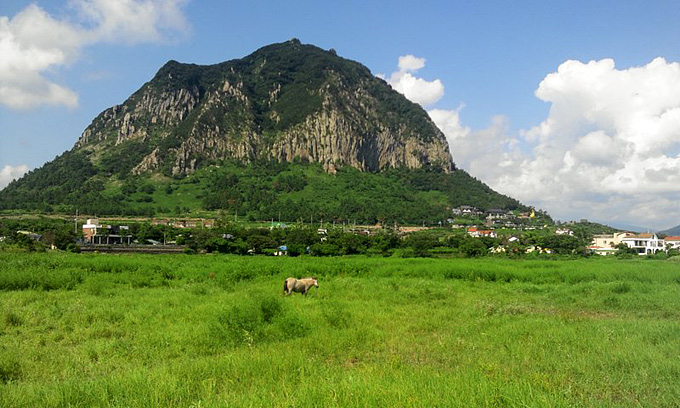
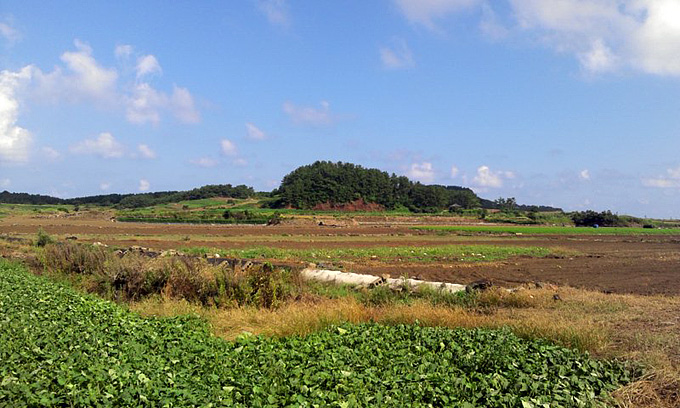

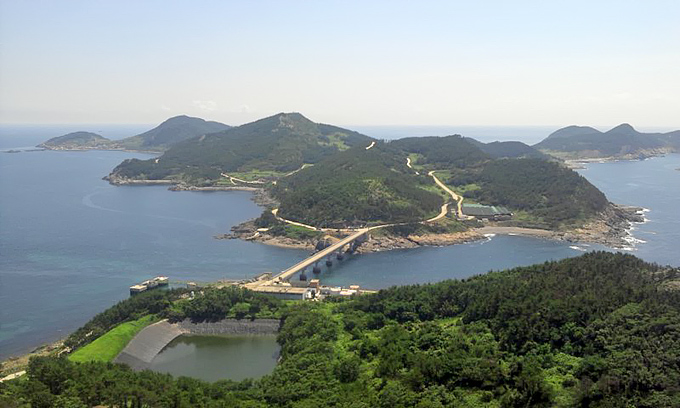
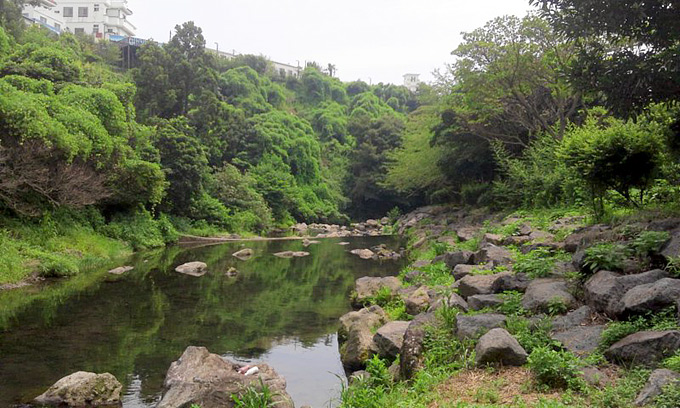
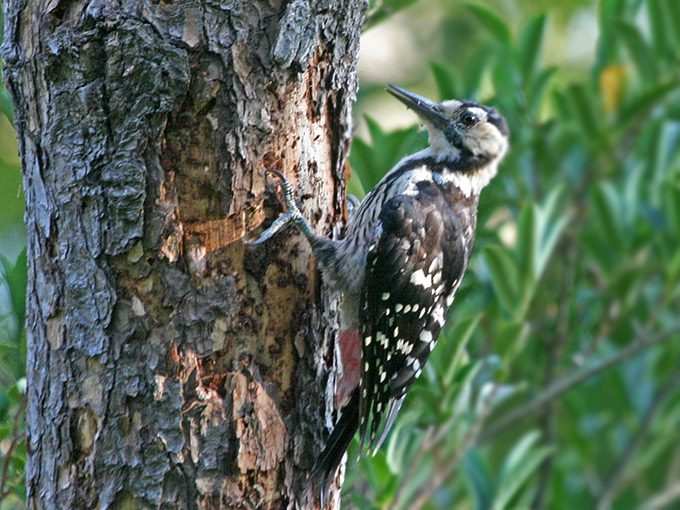
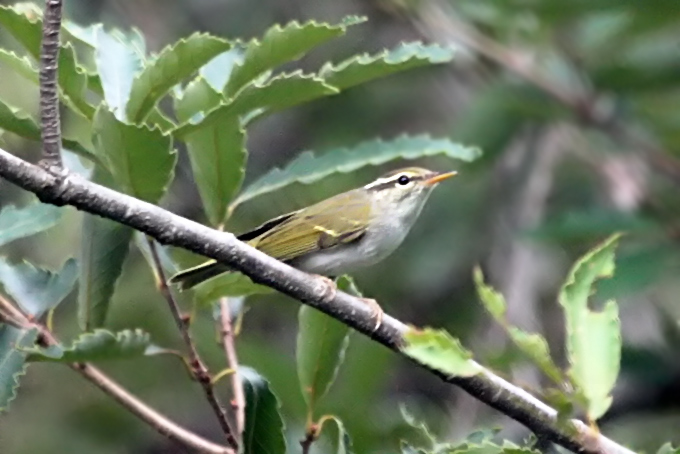
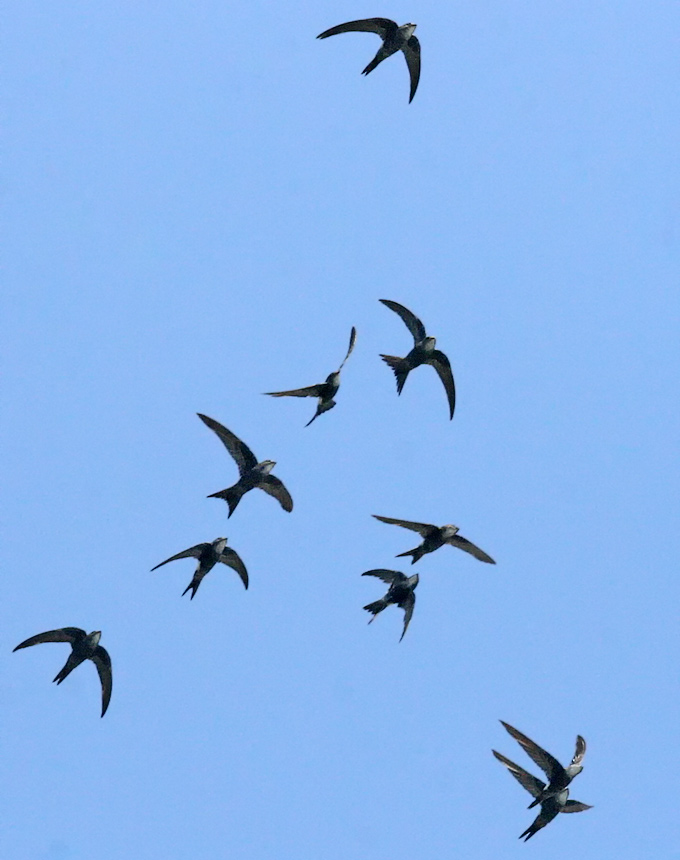
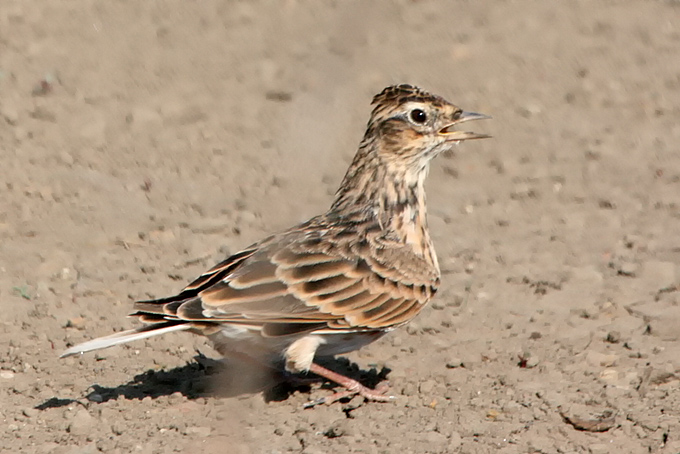
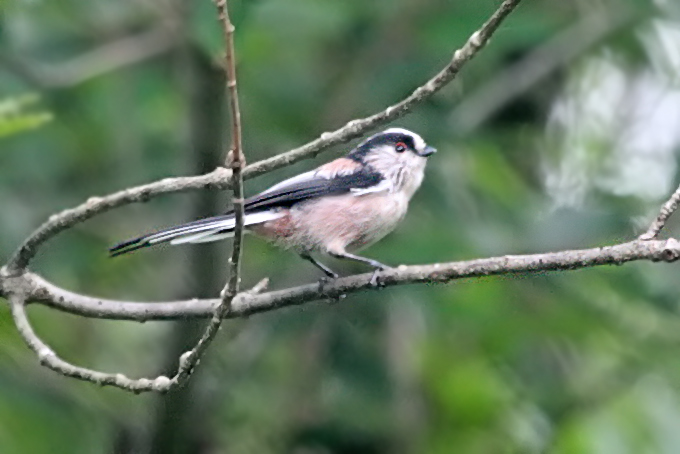
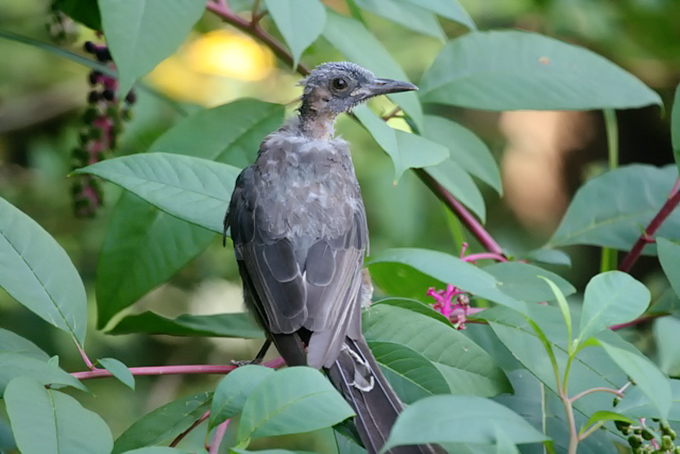
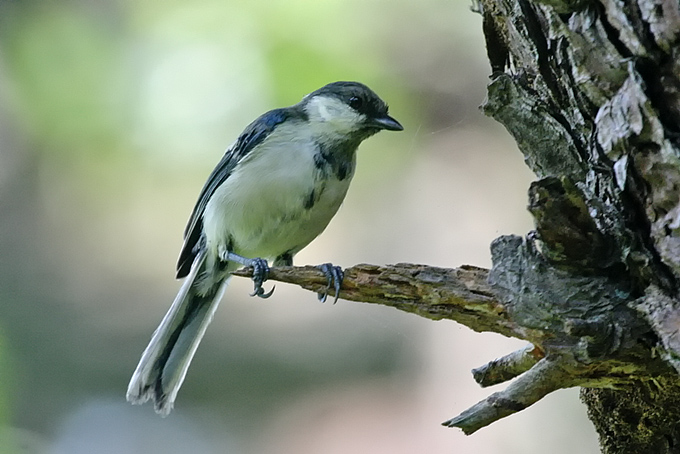
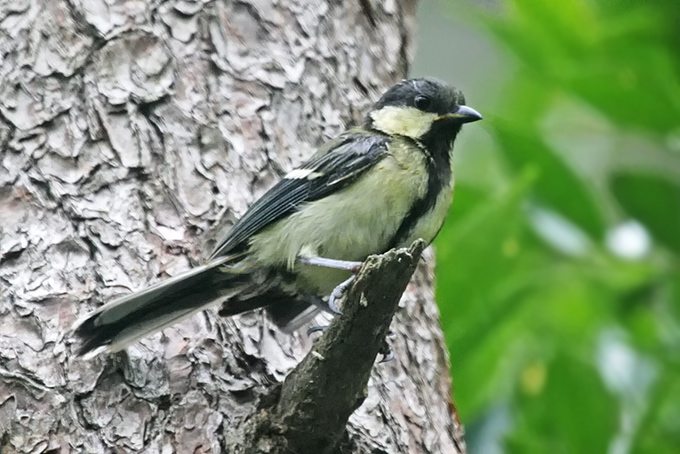
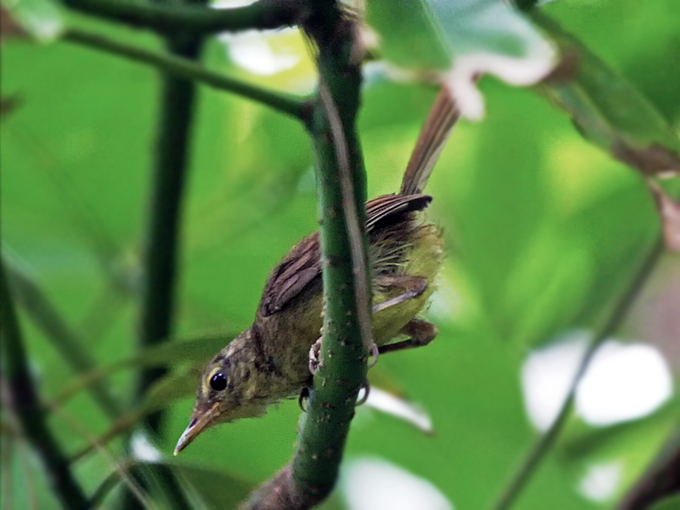
Igidae, August 29, September 2 and 4
With the onset of milder temperatures (maxima of 31C on the 29th falling to 27C on 4th), a few hours spent seawatching off Igidae, and a quick check of a couple of the best areas for migrant landbirds.
On the 29th, with moderate southerlies, 150 phalarope (all presumed to be Red-necked) and >400 terns passed south in two hours of seawatching. Most of the terns were too distant to identify, but closer individuals were all Common Tern with the exception of a single Whiskered Tern.
On the 2nd, with Beaufort 3-4 SE winds and excellent visibility (much of the coastline of Teima Do was clearly visible), offshore movement was much reduced, with only a dozen Streaked Shearwater and two Red-necked Phalarope (both juveniles) offshore in 90 minutes of observation. In woodland, half-a-dozen Arctic Warbler and one presumed Japanese Leaf Warbler (identification based on clean yellow on much of underparts), 2+ Grey-streaked Flycatcher, one First Calendar-year Blue-and White Flycatcher, and two paradise flycatchers. One was obviously a male Black Paradise Flycatcher while the other was most likely a female-type (First Calendar-year?) Black Paradise. However, in dull dusk light and usually part-obscured by vegetation (as in both of the images), it appeared quite bright above (one view from the rear suggested quite rufous-tones, while other views suggested it was more obviously within the range of female Black), with a shiny black cap contrasting sharply with the otherwise dull blackish head and dark grey, diffusely-edged breast. How to confidently separate Black from Asian Paradise Flycatcher in this plumage? Comments welcome.
On the 4th, two more hours were spent at Igidae. Under sunny skies, with very good visibility and Beaufort Force 3-4 NE winds, diversity offshore was limited, but 214 Streaked Shearwater were counted passing north in the first hour, with 53 counted moving north in a single scan 30 minutes later. Few other birds appeared to be on the move, though 50+ Red-necked Phalarope were also seen. In the main gully, the highlight was provided by better views of the male Black Paradise Flycatcher (considered the same as on the 2nd), with apparently a second paradise flycatcher again heard briefly there (the female-type from the 2nd?).
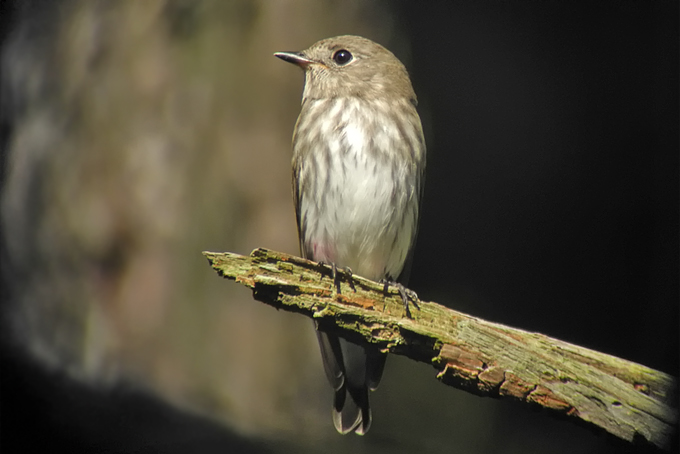
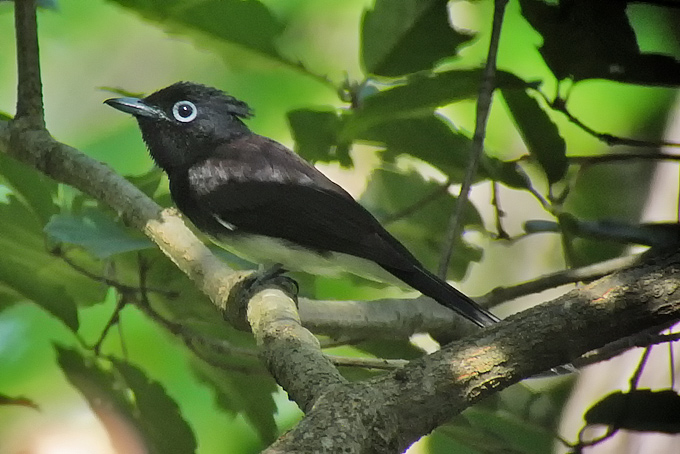
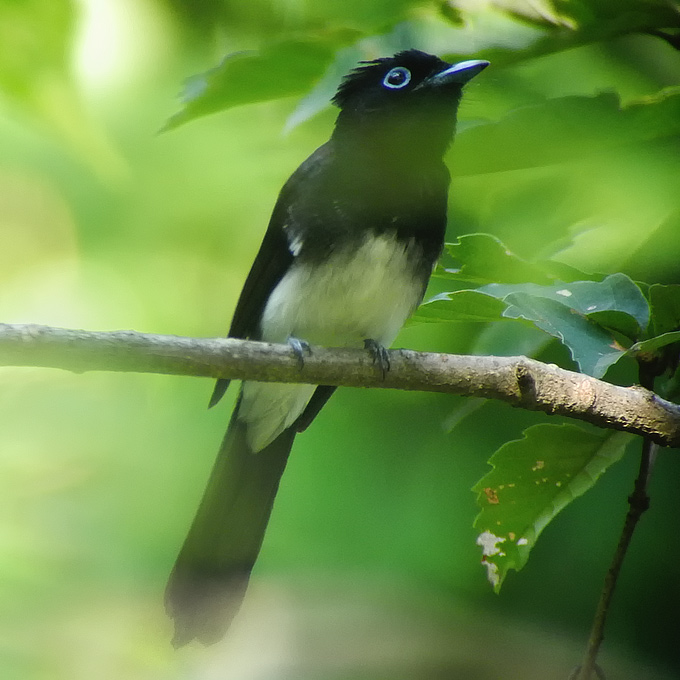
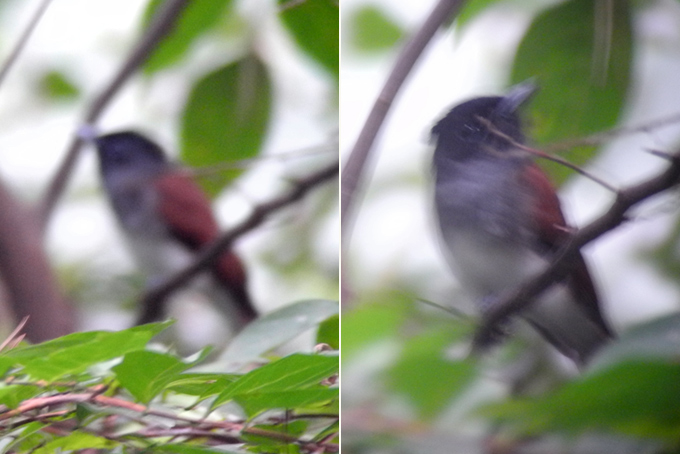
Yongjeong Island, September 1
An afternoon on the island included a brief look at the main shorebird roost followed by the Western Reservoir and adjacent natural wetland. This shallow reed-fringed wetland is probably the best remaining freshwater habitat on the island, but it has already been 70% filled in and appears to be under threat of final annihilation to make way for the new airport runway. Birds seen today were:
- Mandarin Duck Aix galericulata. Two on the wetland.
- Mallard Anas platyrhynchos. Three on the wetland.
- Eastern Spot-billed Duck Anas zonorhyncha.
- Garganey Anas querquedula. Six on the wetland. Intriguing to see them feeding in a co-ordinated group, paddling along with heads down at the same time.
- Little Grebe Tachybaptus ruficollis.
- Black-faced Spoonbill Platalea minor. Sixty-seven on the southern mudflat included at least four juveniles.
- Yellow Bittern Ixobrychus sinensis. One on the wetland is apparently a first record for the island.
- Grey Heron Ardea cinerea.
- Great Egret Ardea alba.
- Intermediate Egret Egretta intermedia.
- Little Egret Egretta garzetta.
- Chinese Egret Egretta eulophotes. At least one on the southern mudflat.
- Great Cormorant Phalacrocorax carbo.
- Common Moorhen Gallinula chloropus. One immature on the wetland.
- Eurasian Coot Fulica atra. Two adults and two immatures on the wetland.
- Black-winged Stilt Himantopus himantopus. One juvenile on the wetland.
- Grey Plover Pluvialis squatarola. Only about ten on the mudflat.
- Bar-tailed Godwit Limosa lapponica.
- Whimbrel Numenius phaeopus.
- Eurasian Curlew Numenius arquata.
- Far Eastern Curlew Numenius madagascariensis.
- Spotted Redshank Tringa erythropus. Seven on the wetland. This species seems to have really declined in recent years. Where have the large flocks gone?.
- Common Greenshank Tringa nebularia.
- Wood Sandpiper Tringa glareola.
- Terek Sandpiper Xenus cinereus. Still up to 300 at the wader roost.
- Red-necked Stint Calidris ruficollis.
- Sharp-tailed Sandpiper Calidris acuminata. One on the wetland. Another species that has apparently crashed in recent years. I hardly ever see them anymore.
- Saunders's Gull Chroicocephalus saundersi. Only two adults on the mudflat. This species is in very low numbers this summer.
- Black-tailed Gull Larus crassirostris.
- Mongolian Gull Larus mongolicus.
- Oriental Reed Warbler Acrocephalus orientalis. Several still singing on the wetland.
- Zitting Cisticola Cisticola juncidis. One calling from the reservoir.
- Vinous-throated Parrotbill Sinosuthera webbiana.
- Eurasian Tree Sparrow Passer montanus.
- Eastern Yellow Wagtail Motacilla tschutschensis. Up to fifteen included both taivana and tschutschensis.
- White Wagtail Motacilla alba.
- Meadow Bunting Emberiza cioides.
Non-avian wildlife included a Black-spotted Frog Pelophylax nigromaculatus, several Asian Swallowtail Papilio xuthus and a Painted Lady Cynthia cardui.
